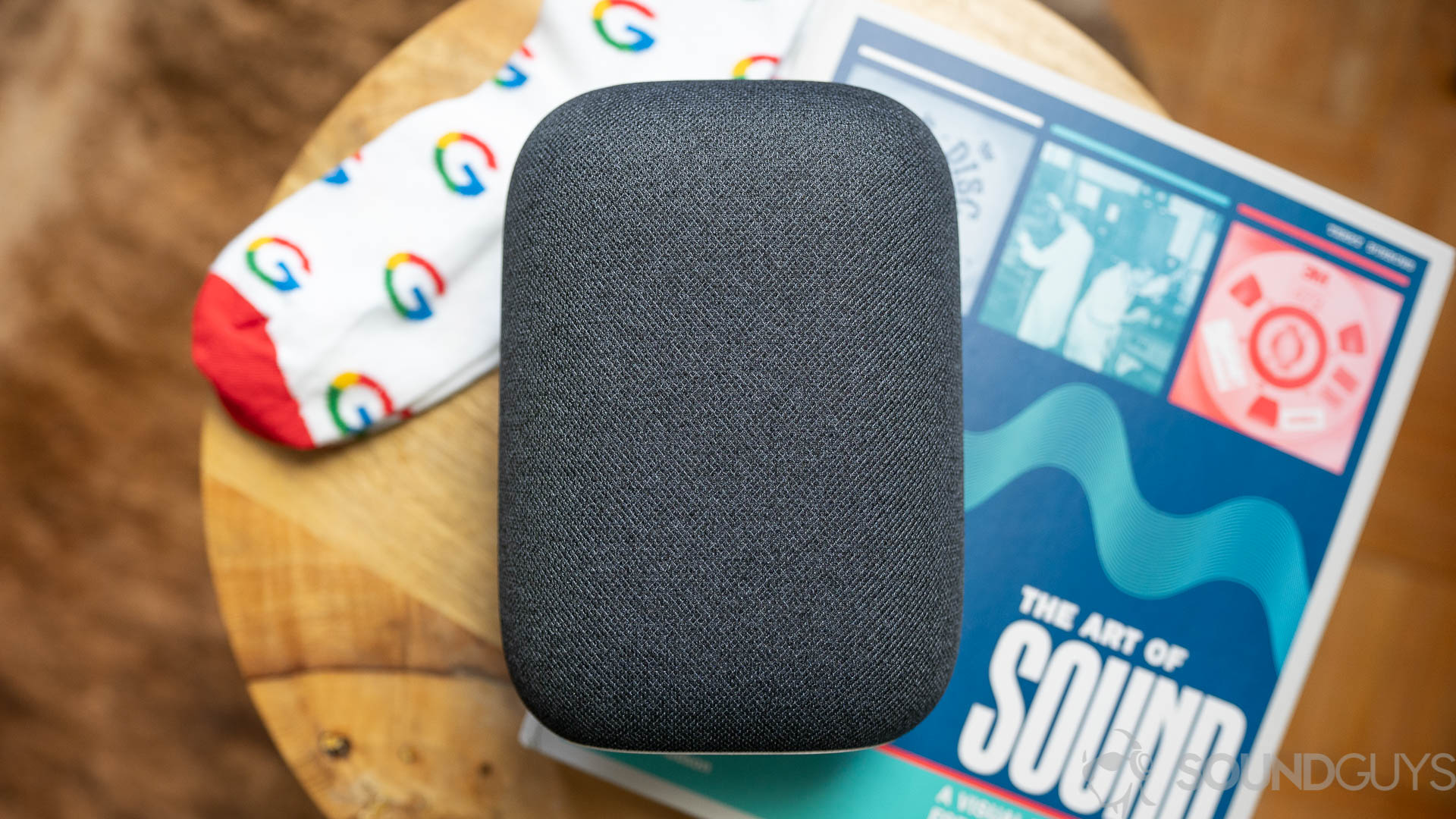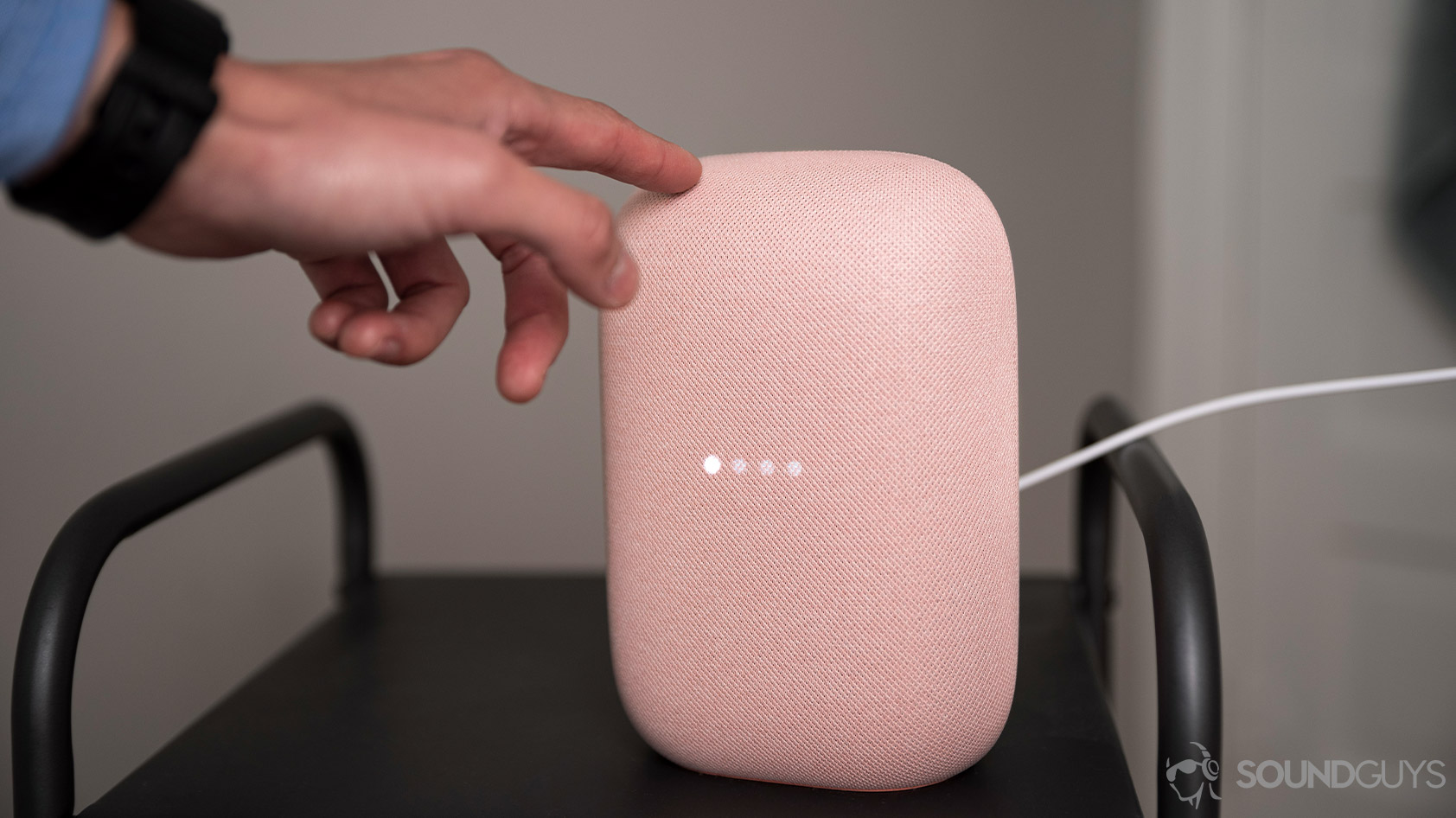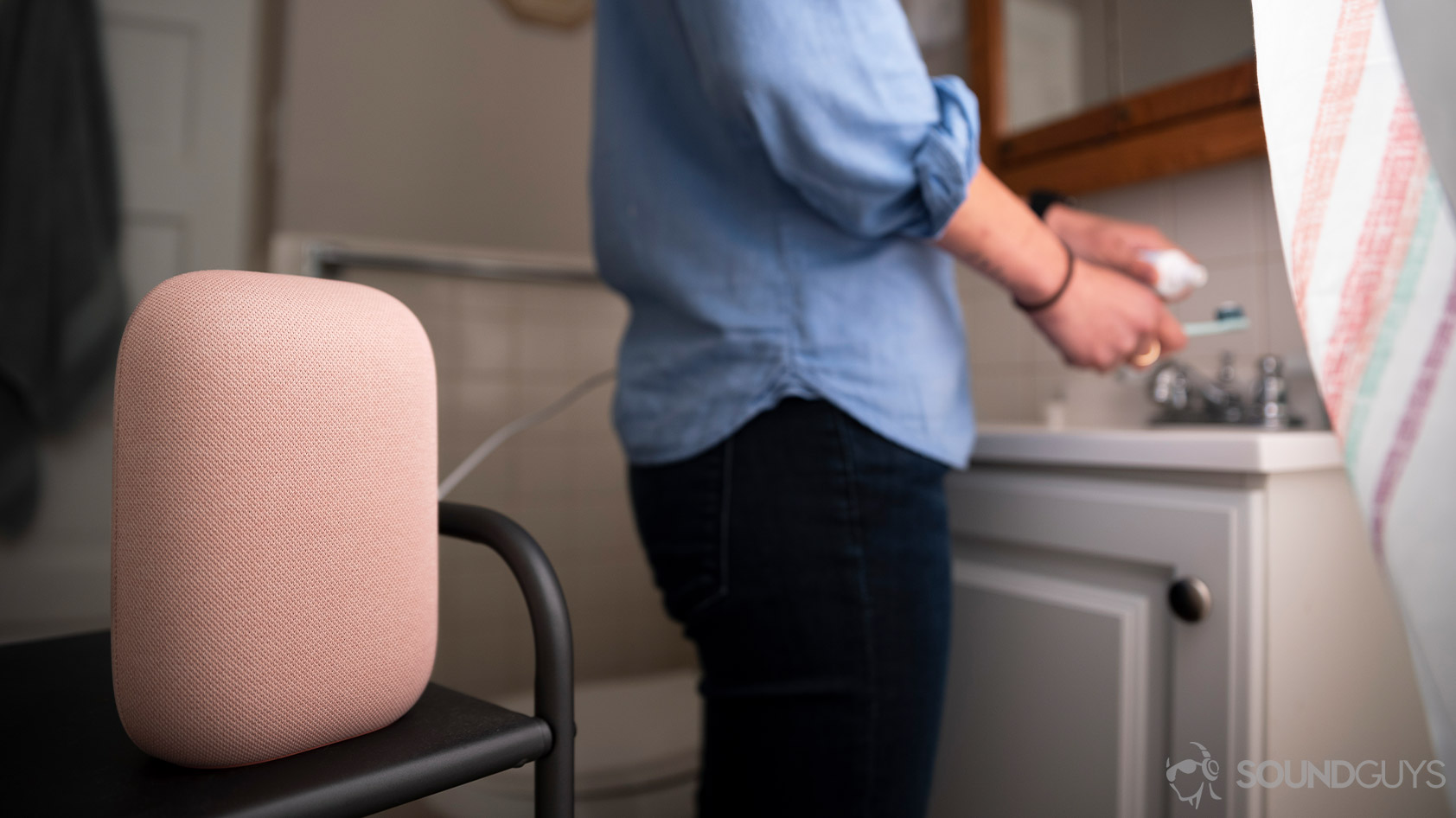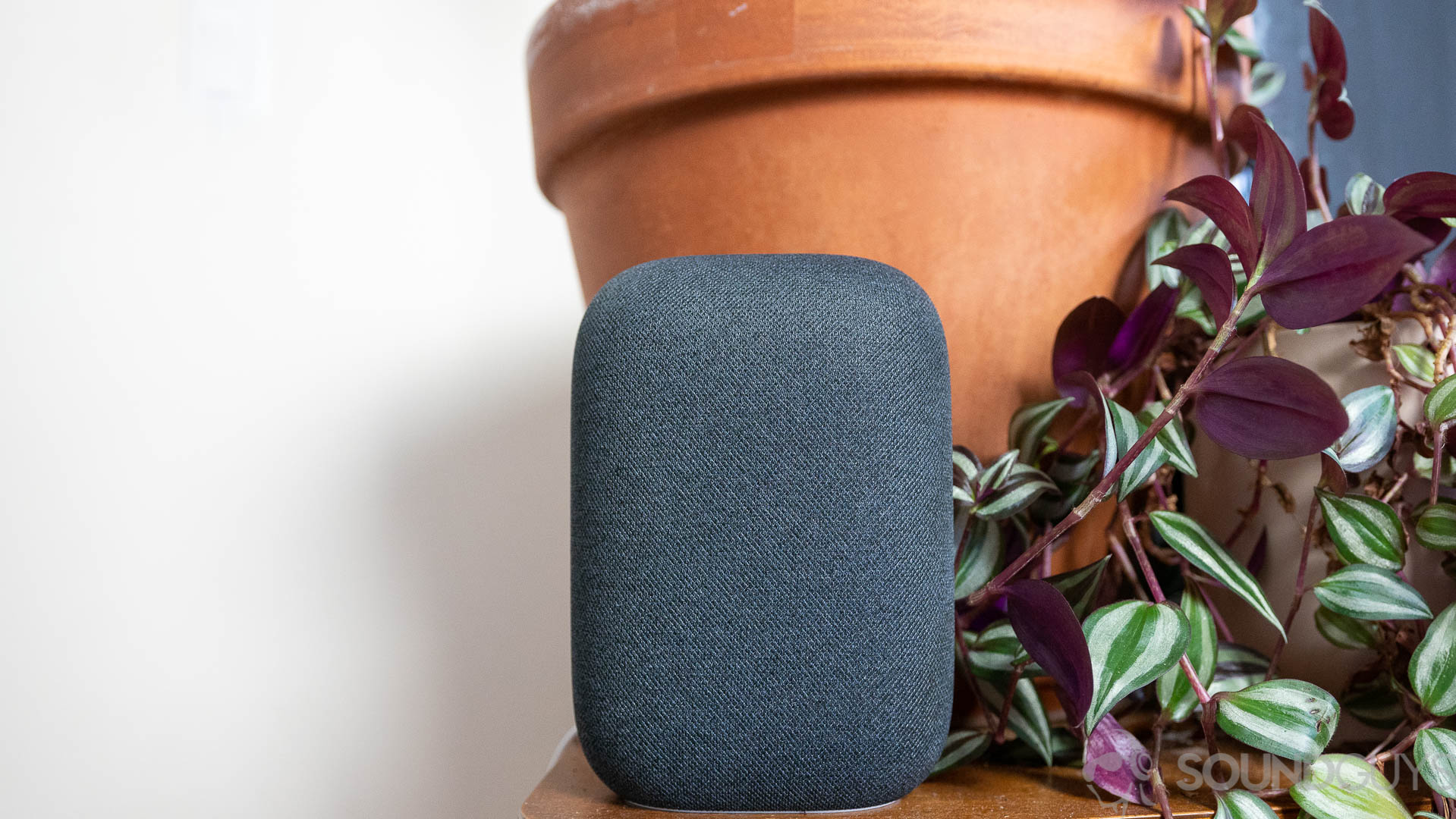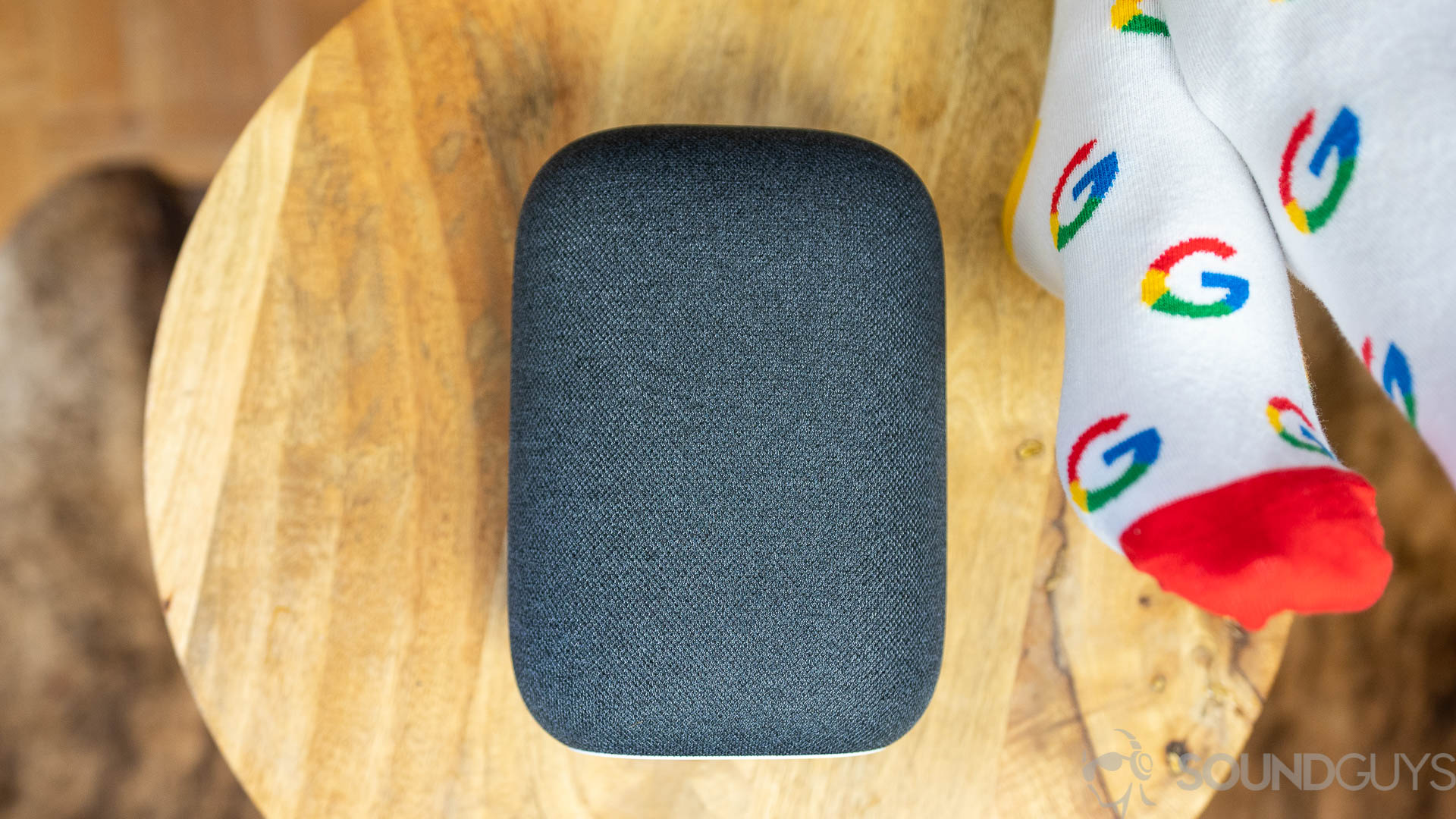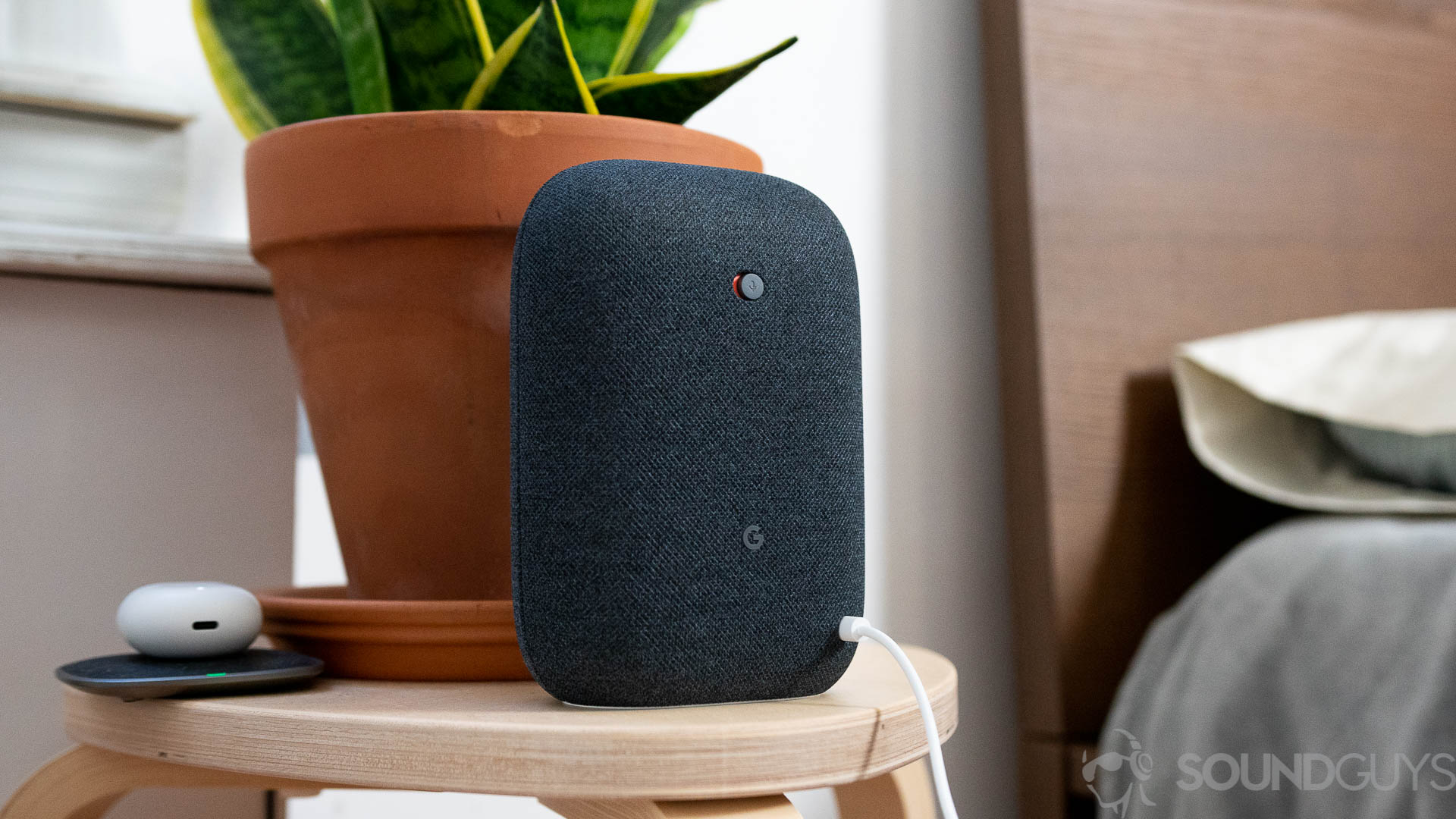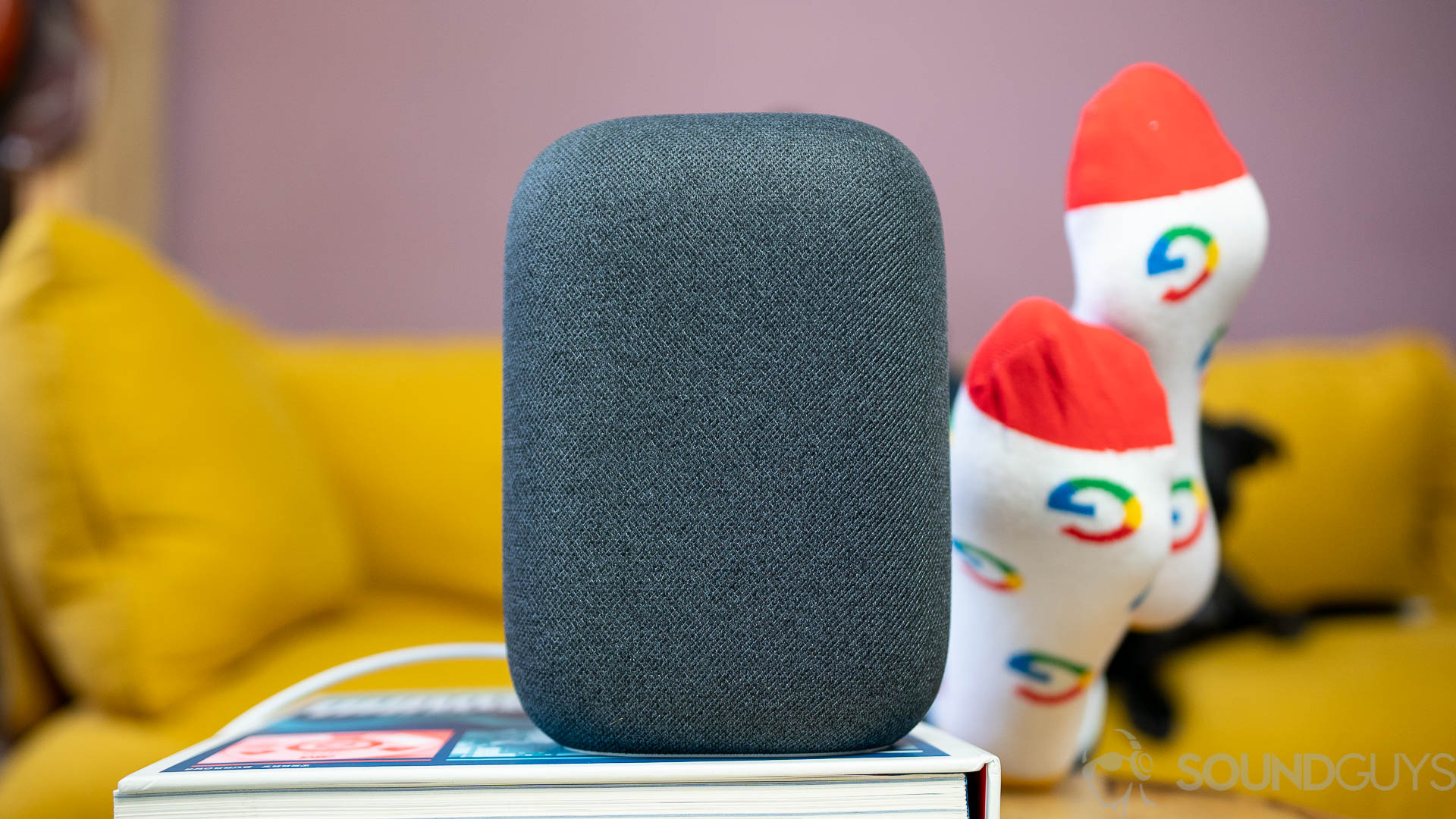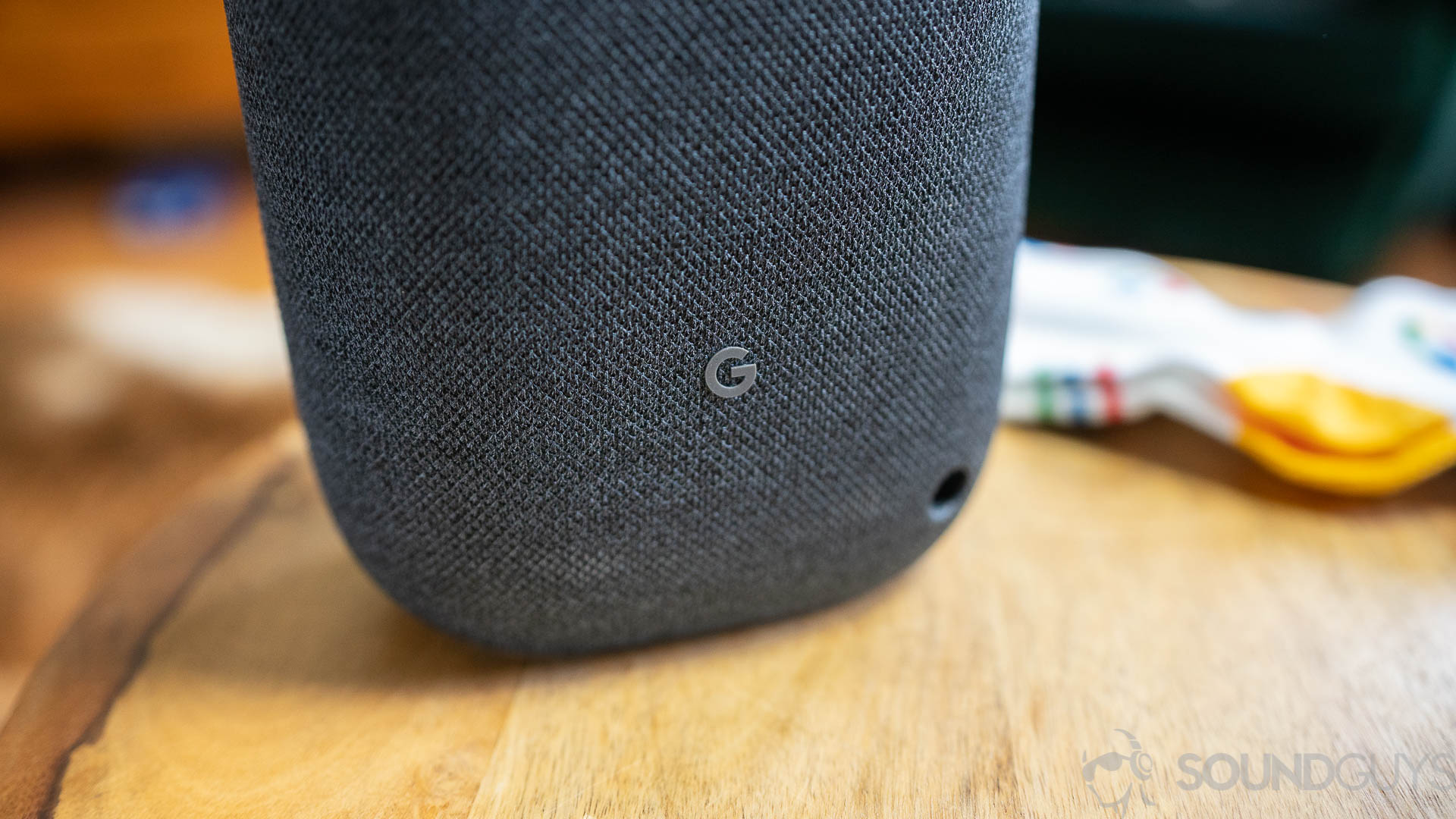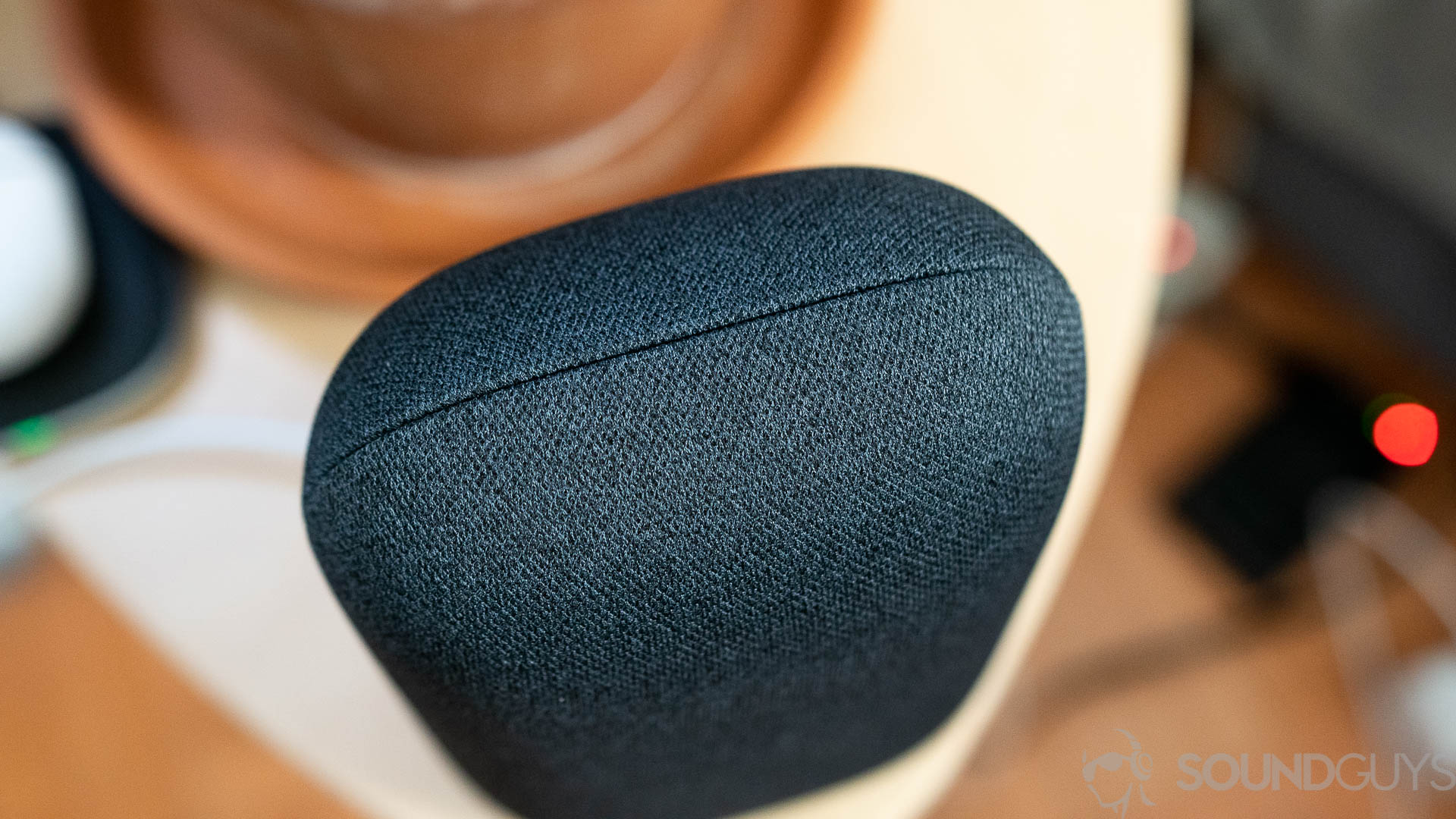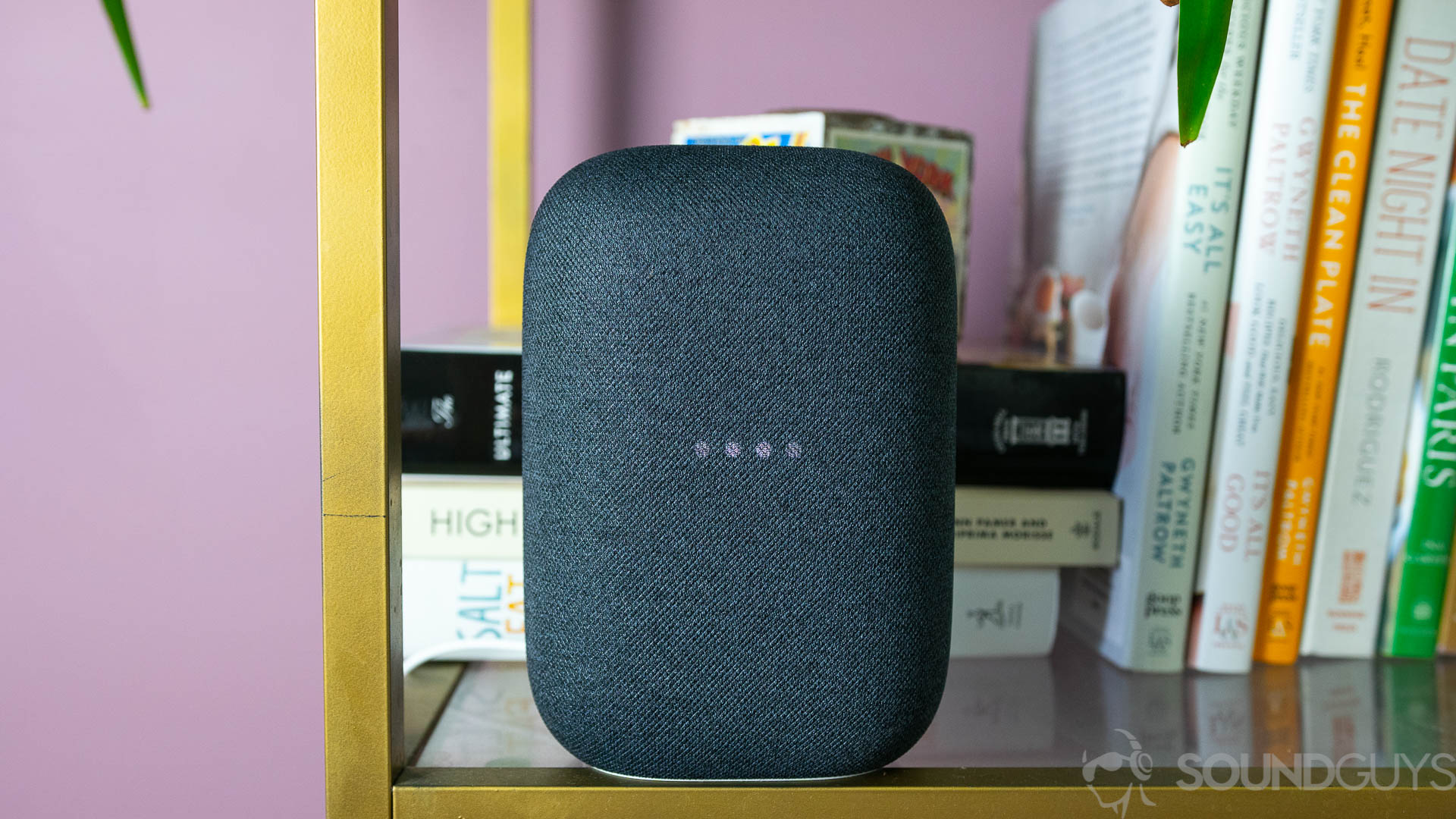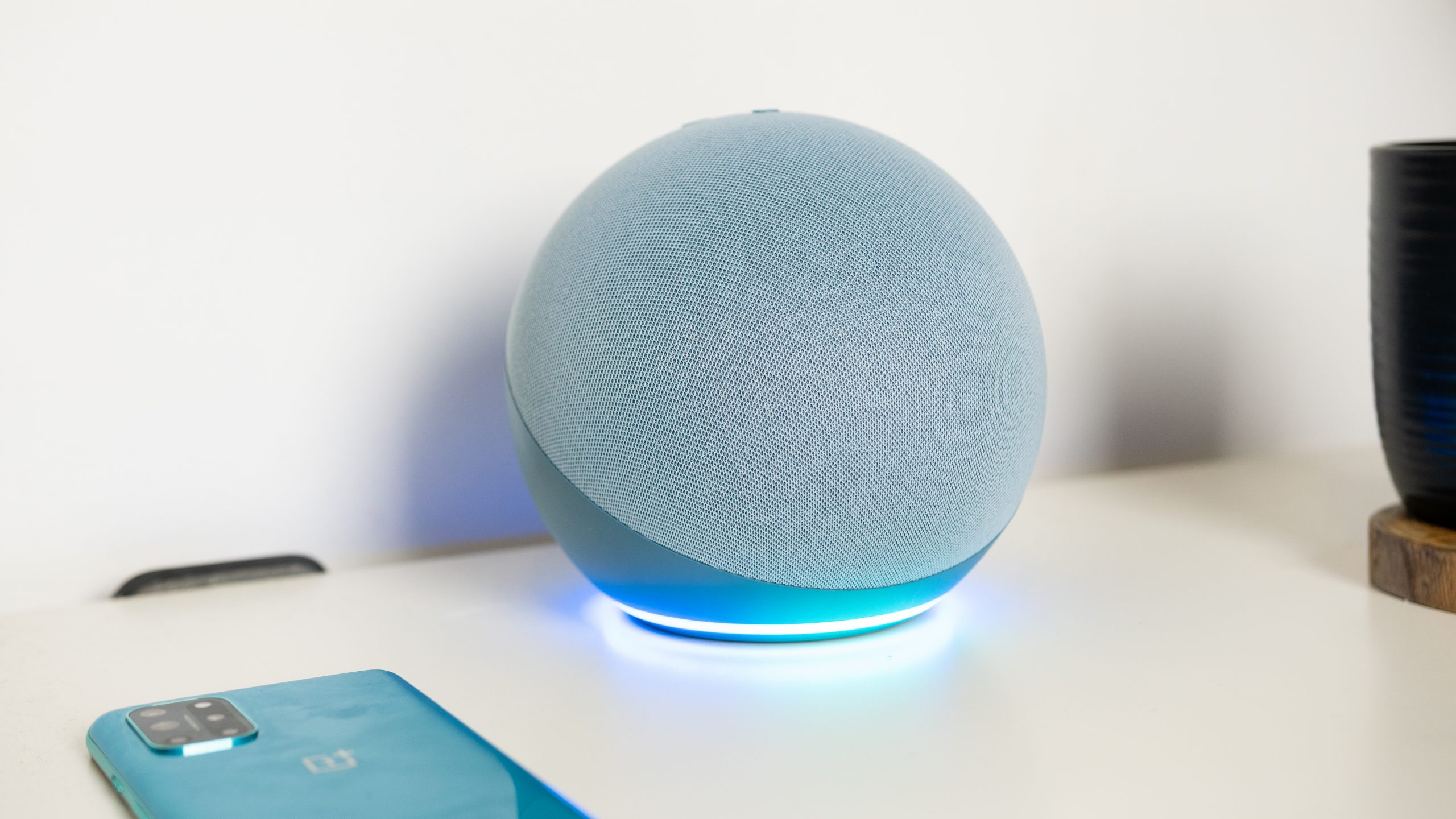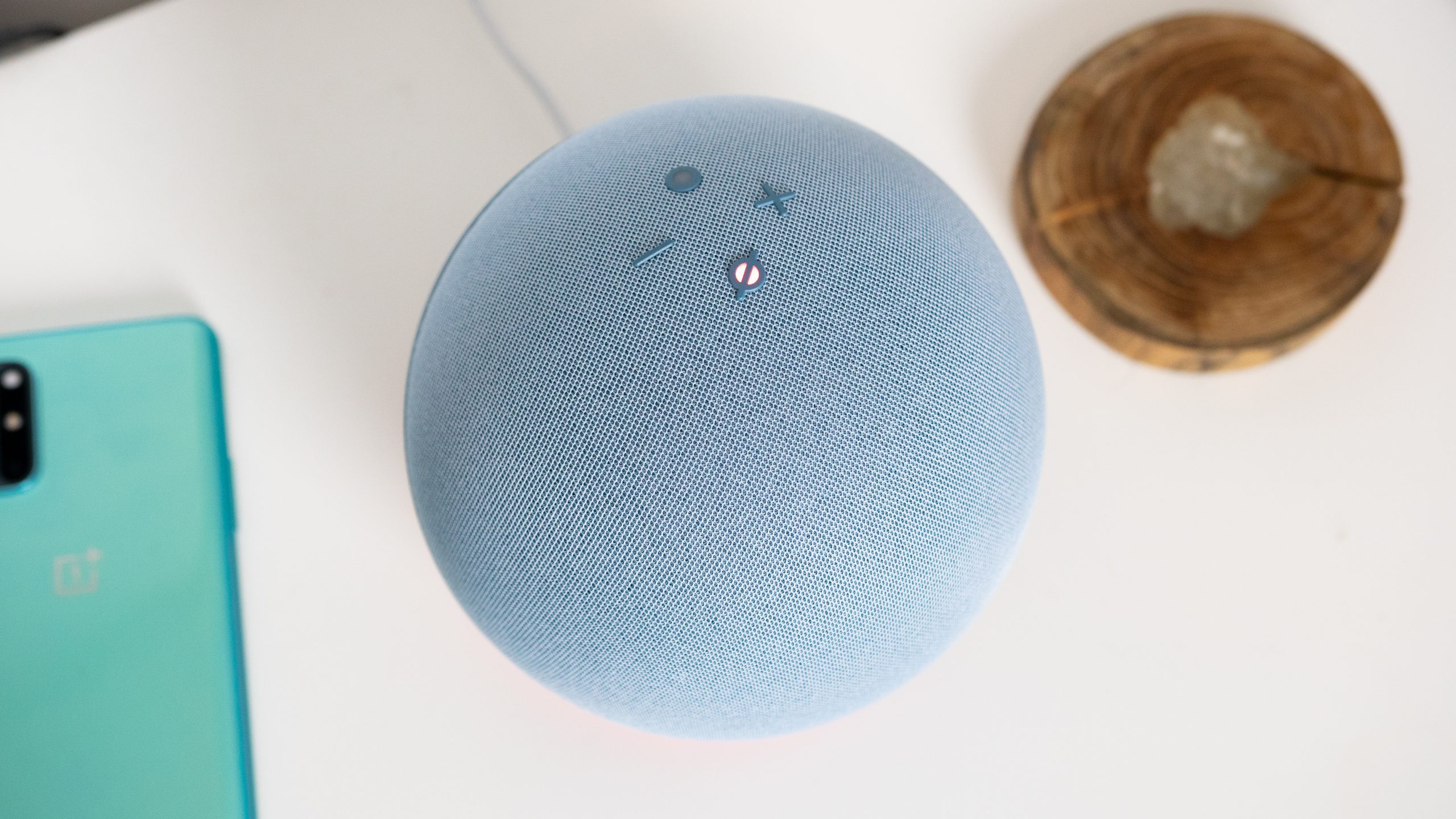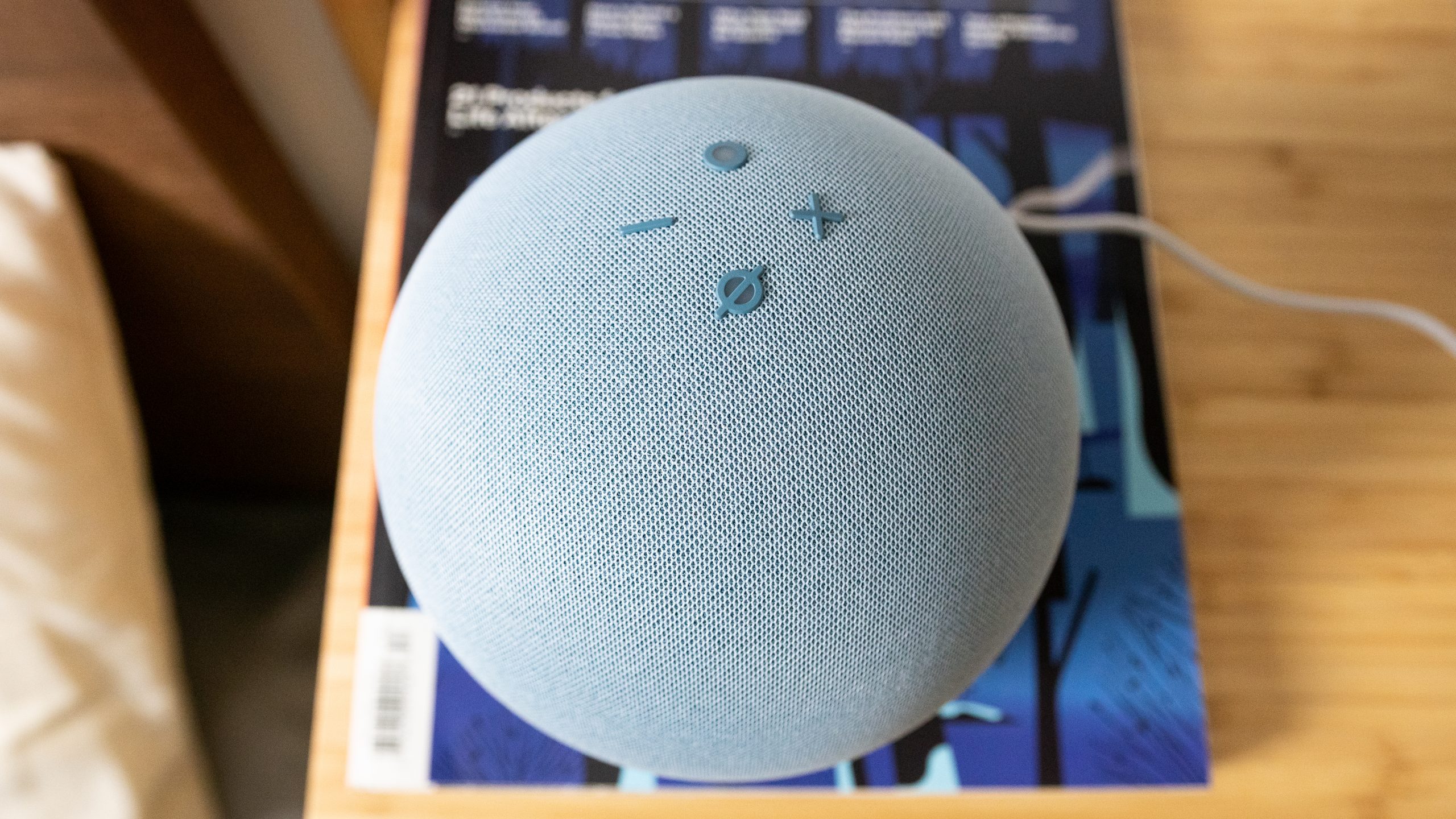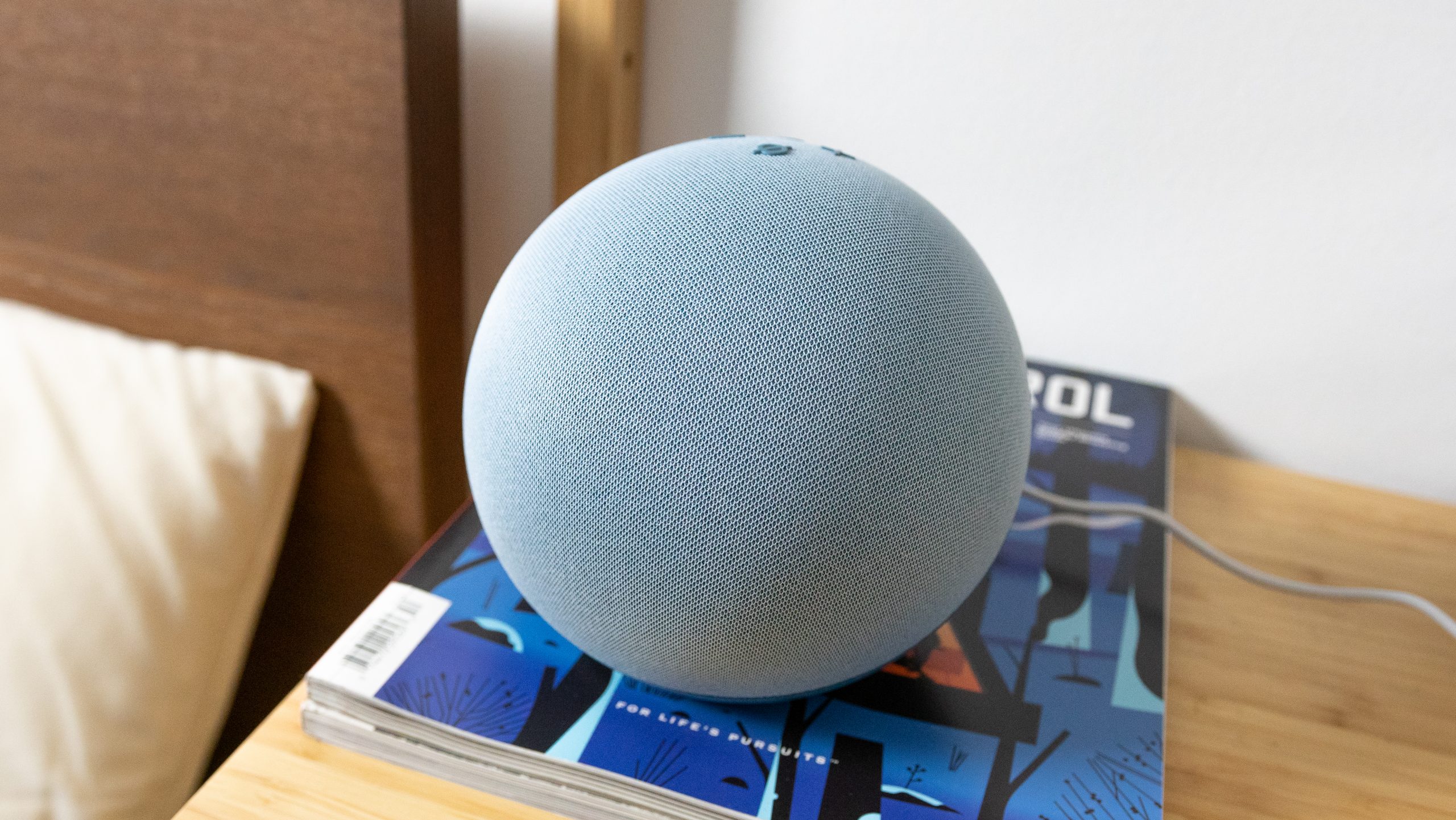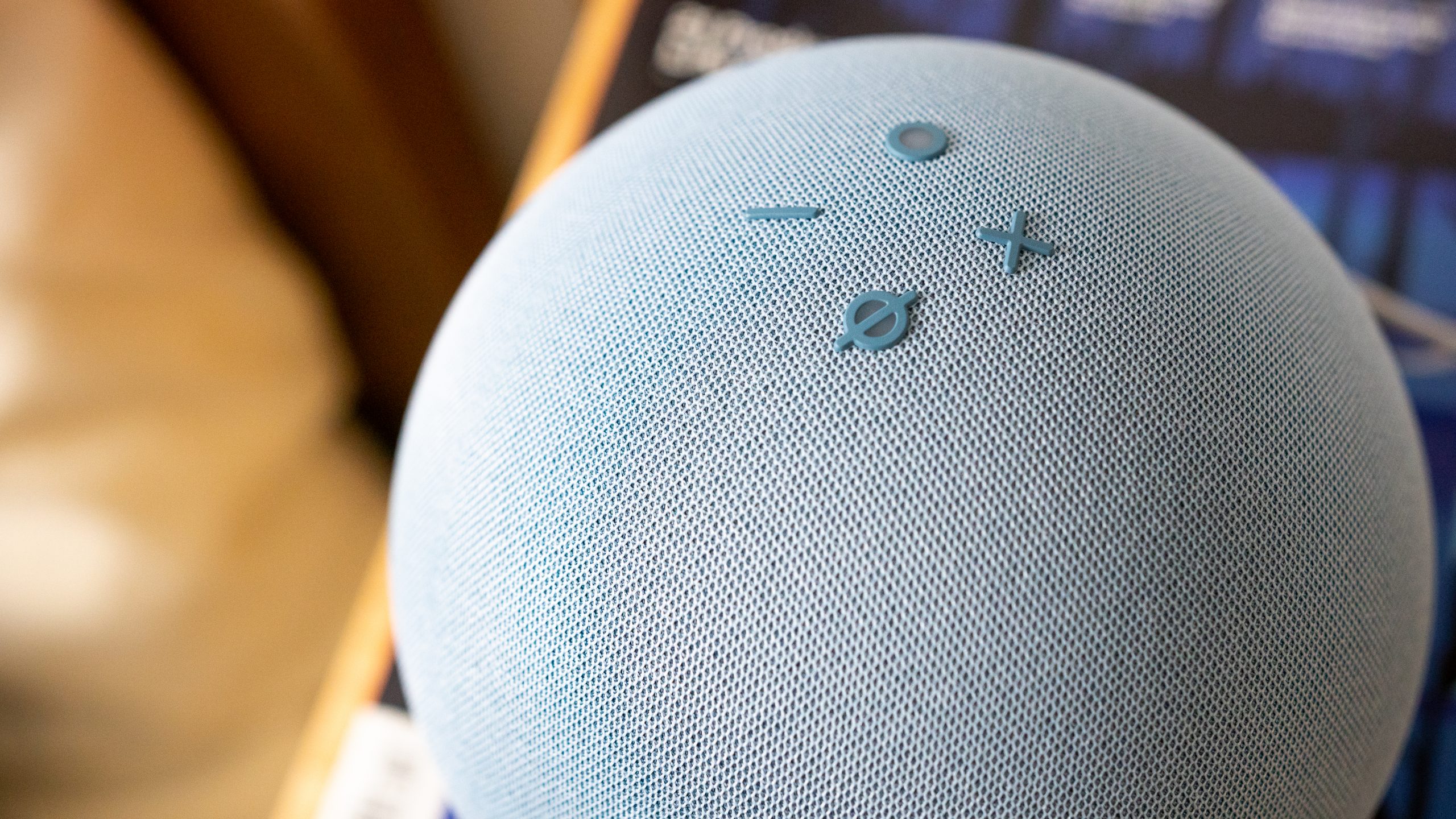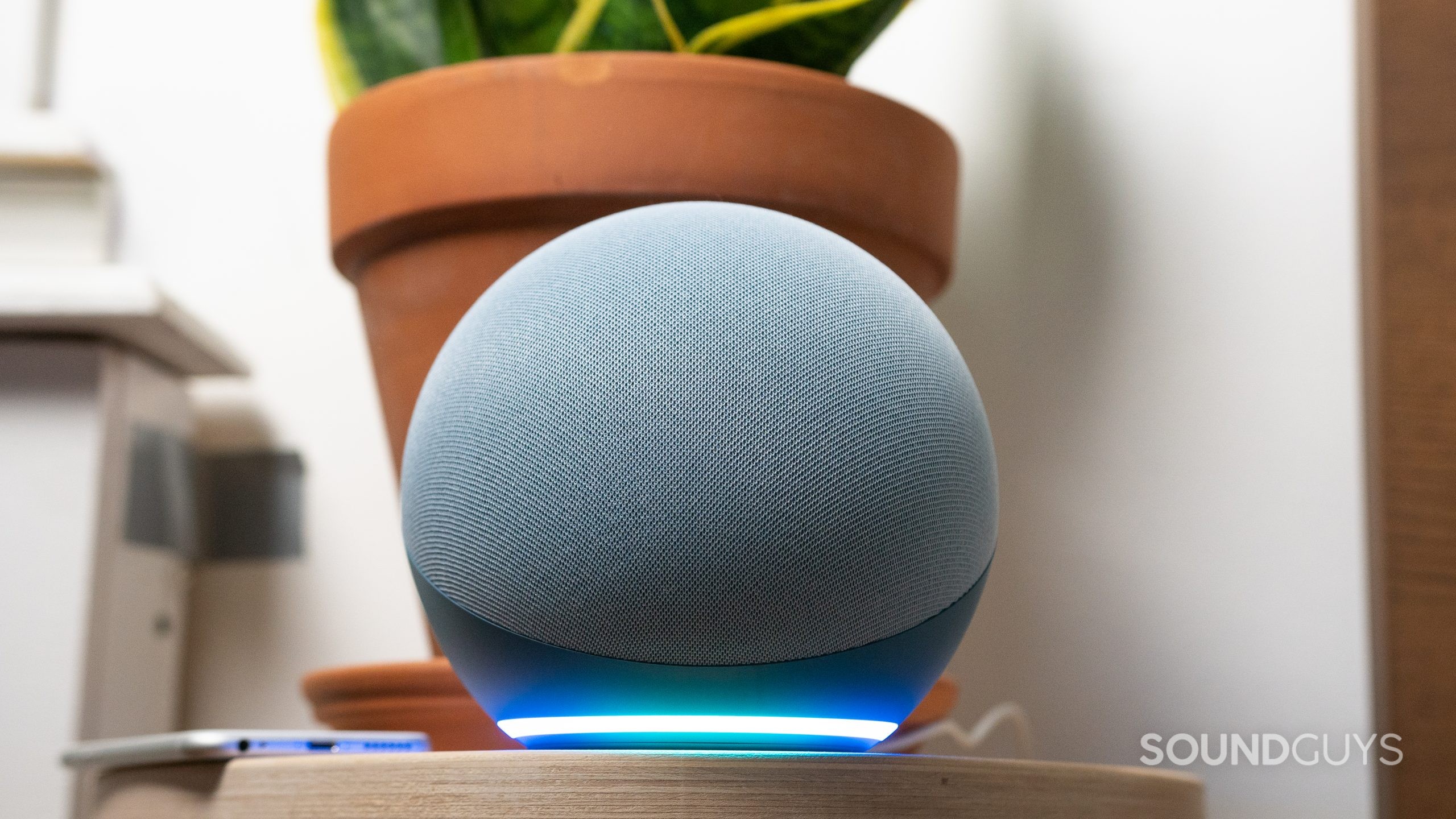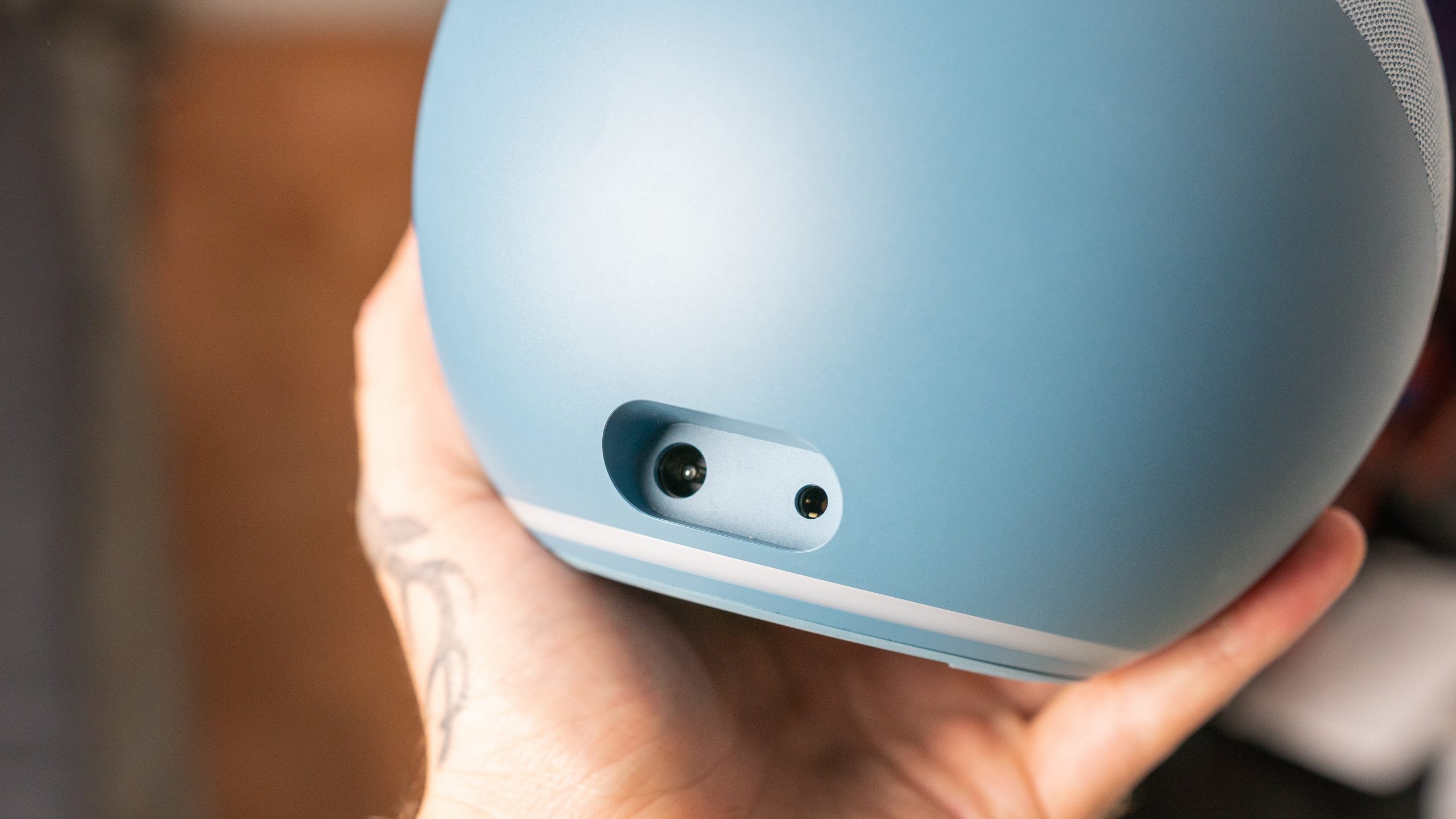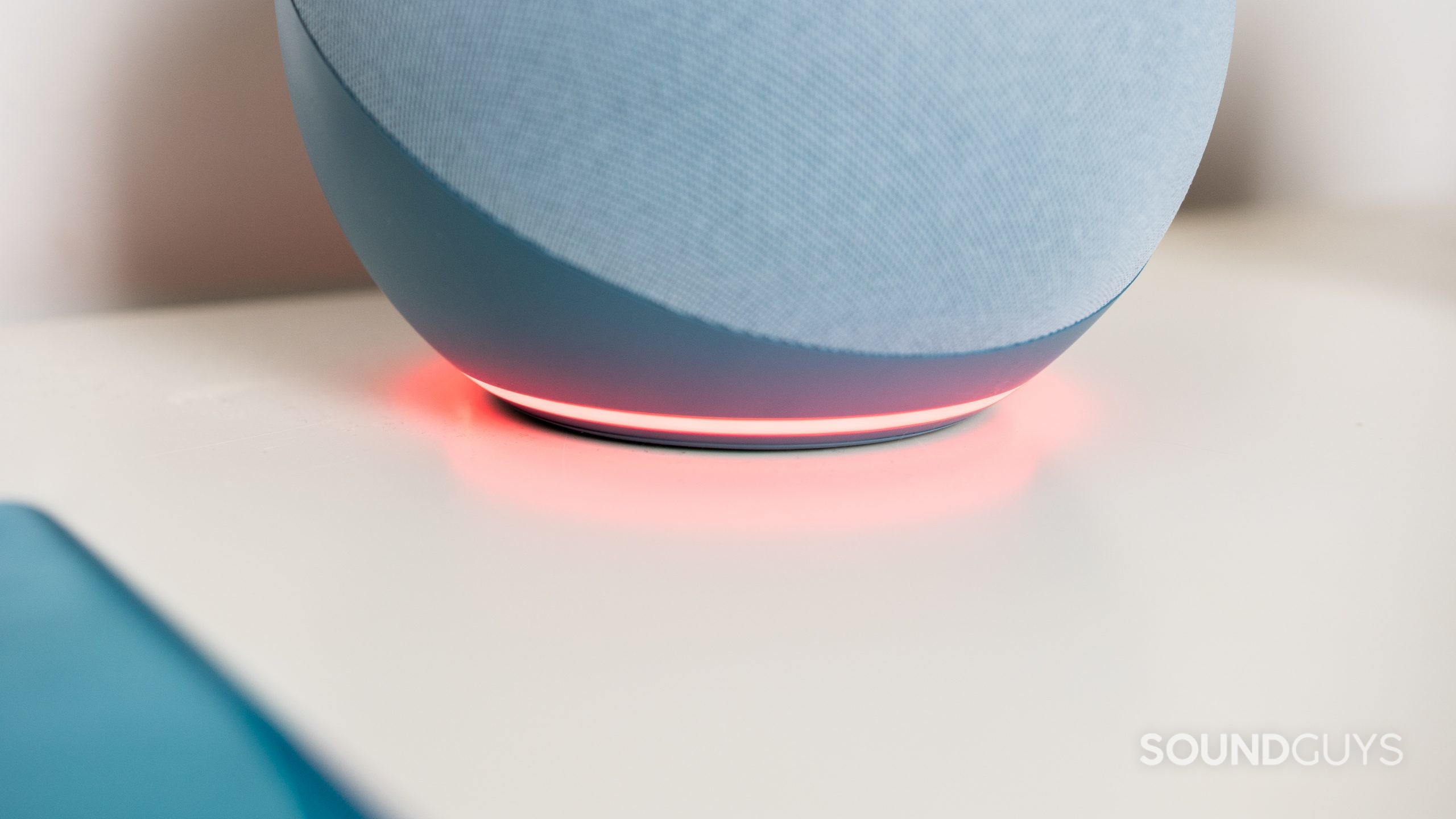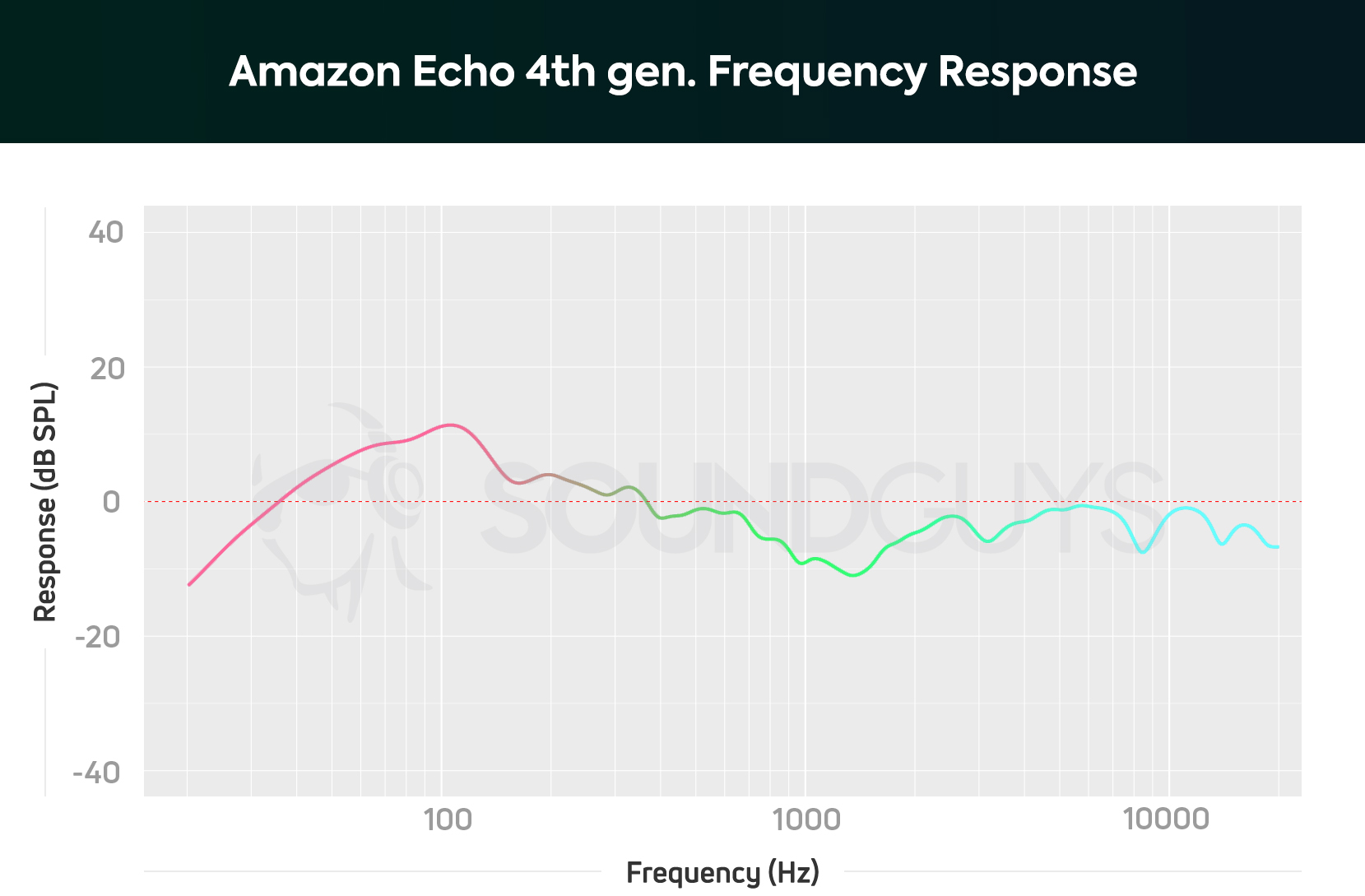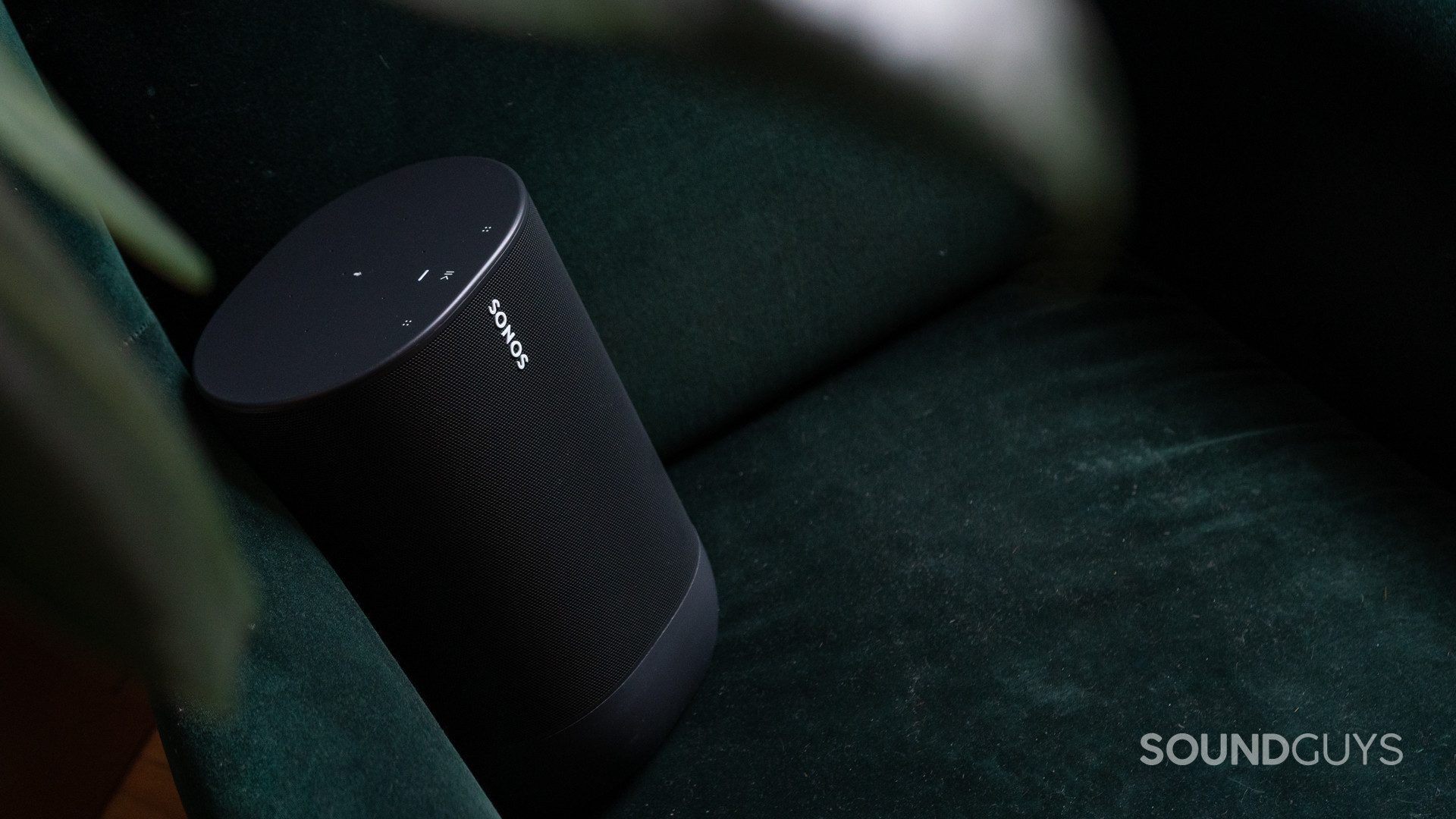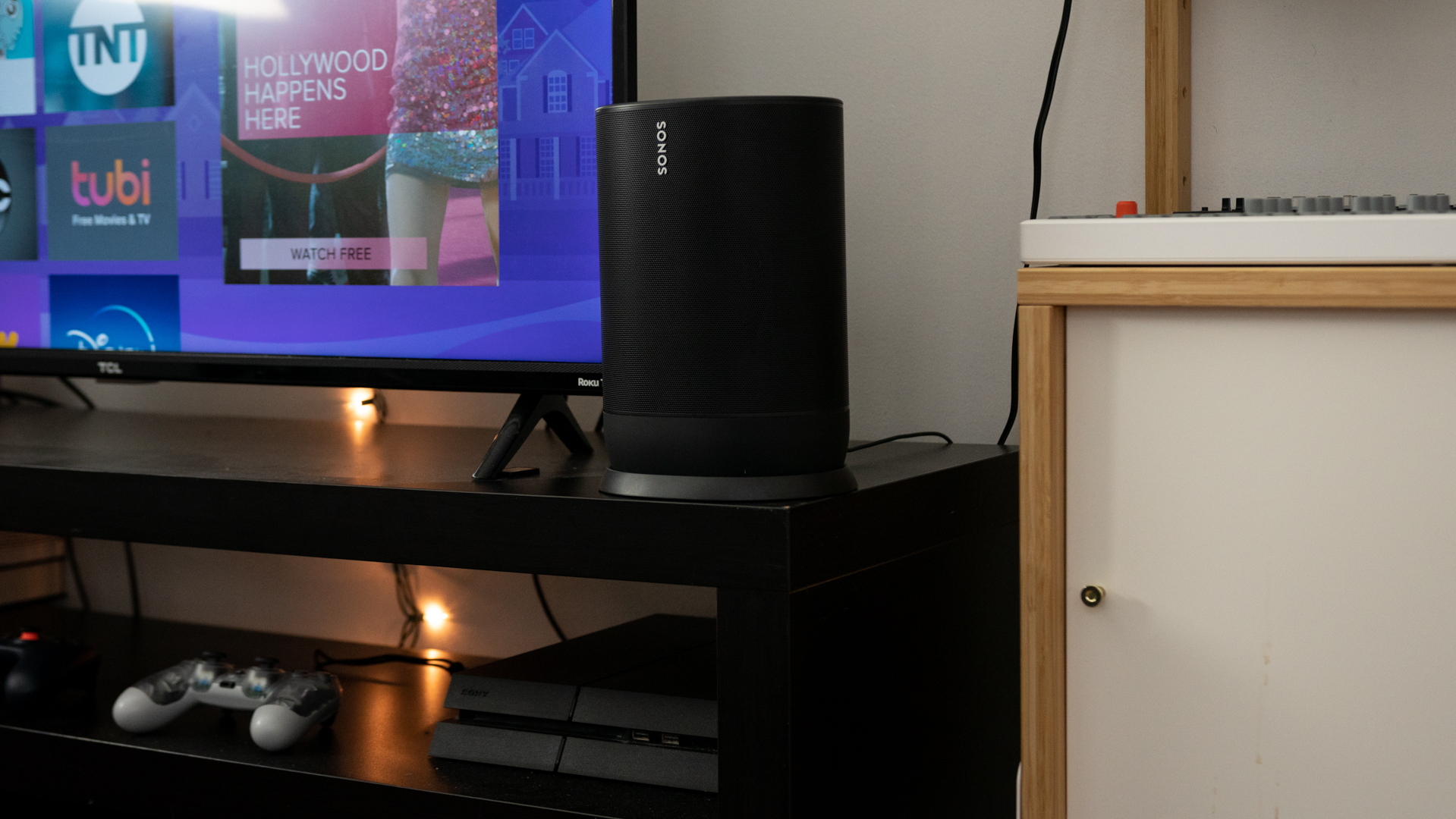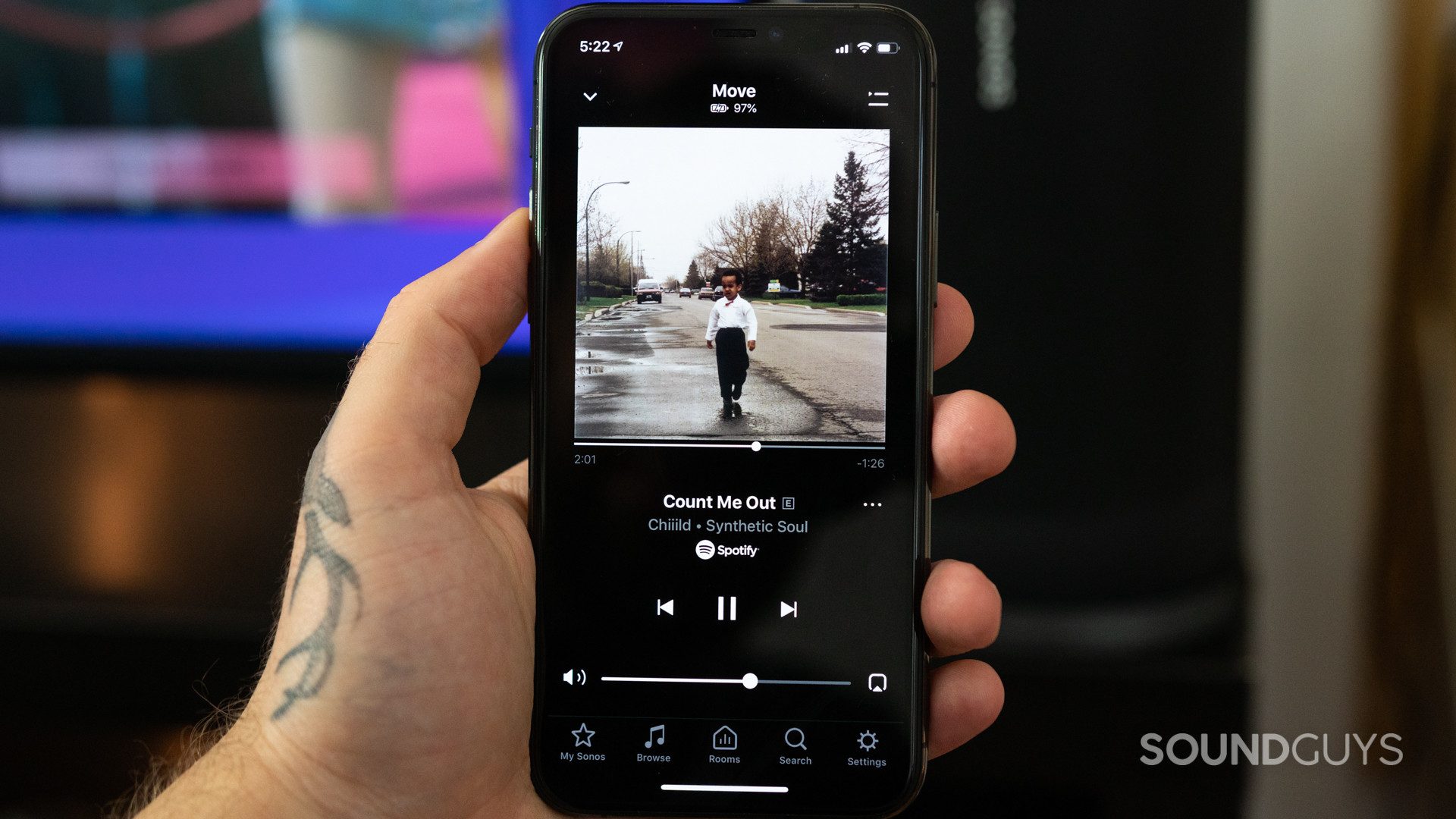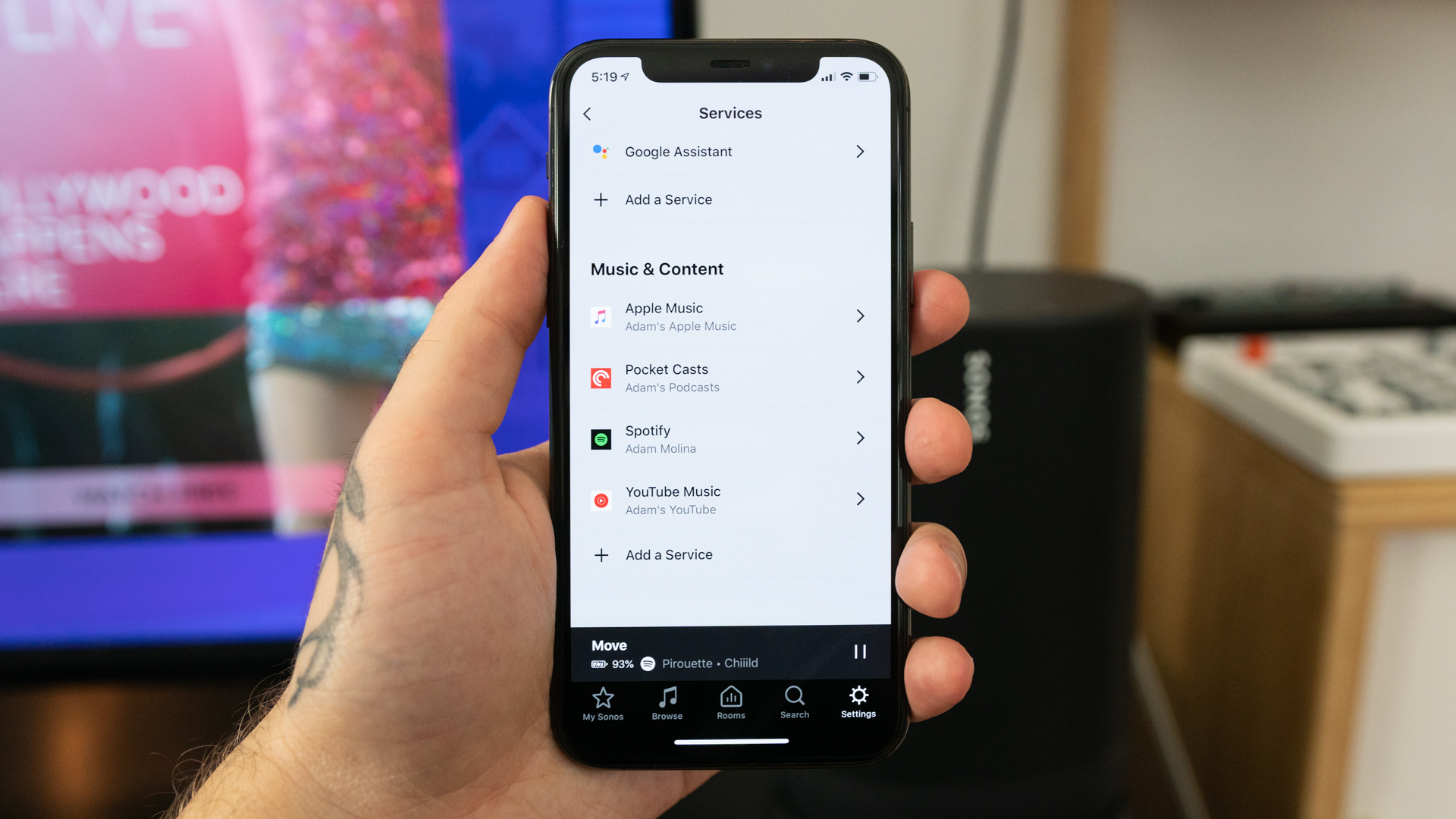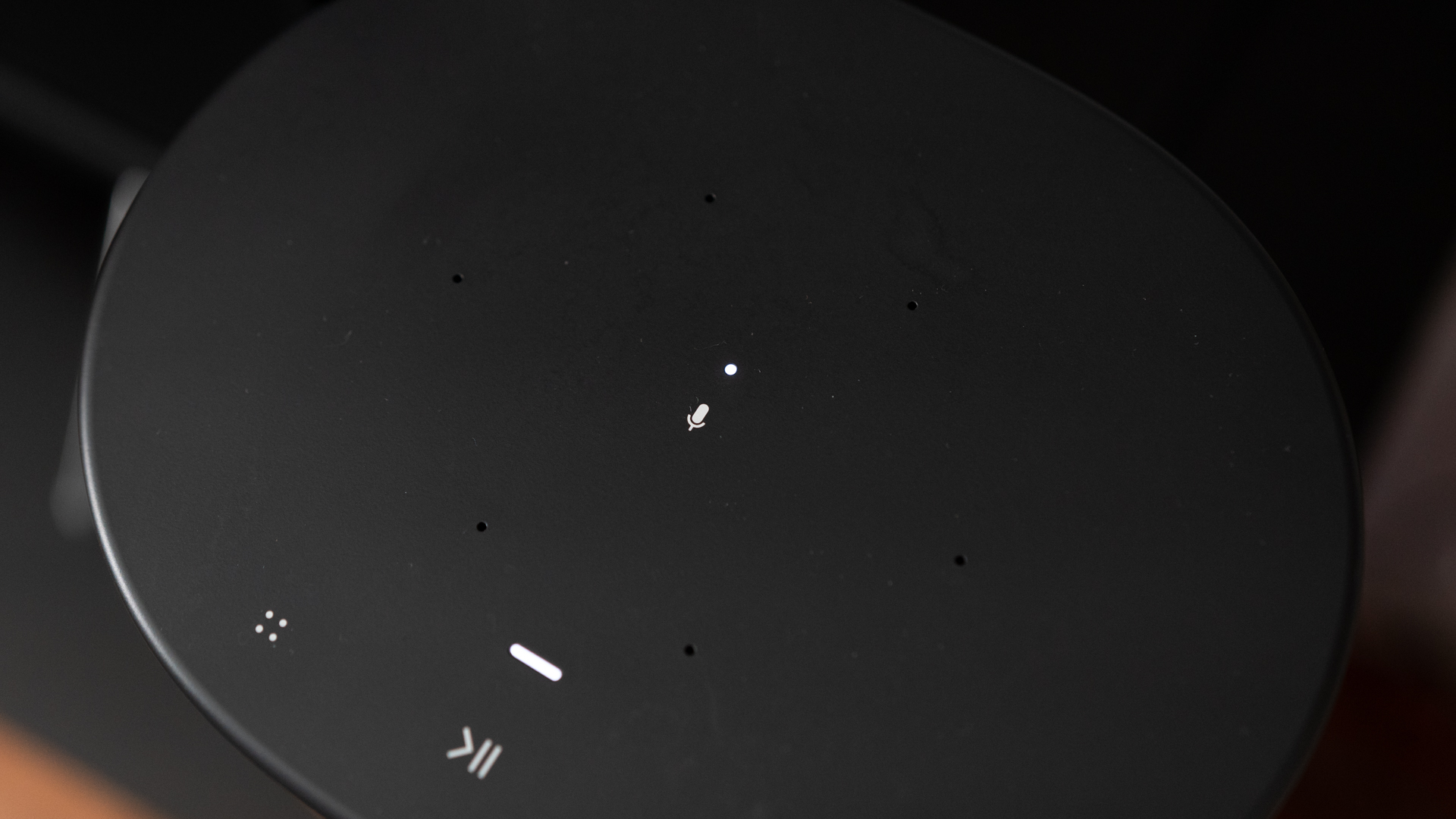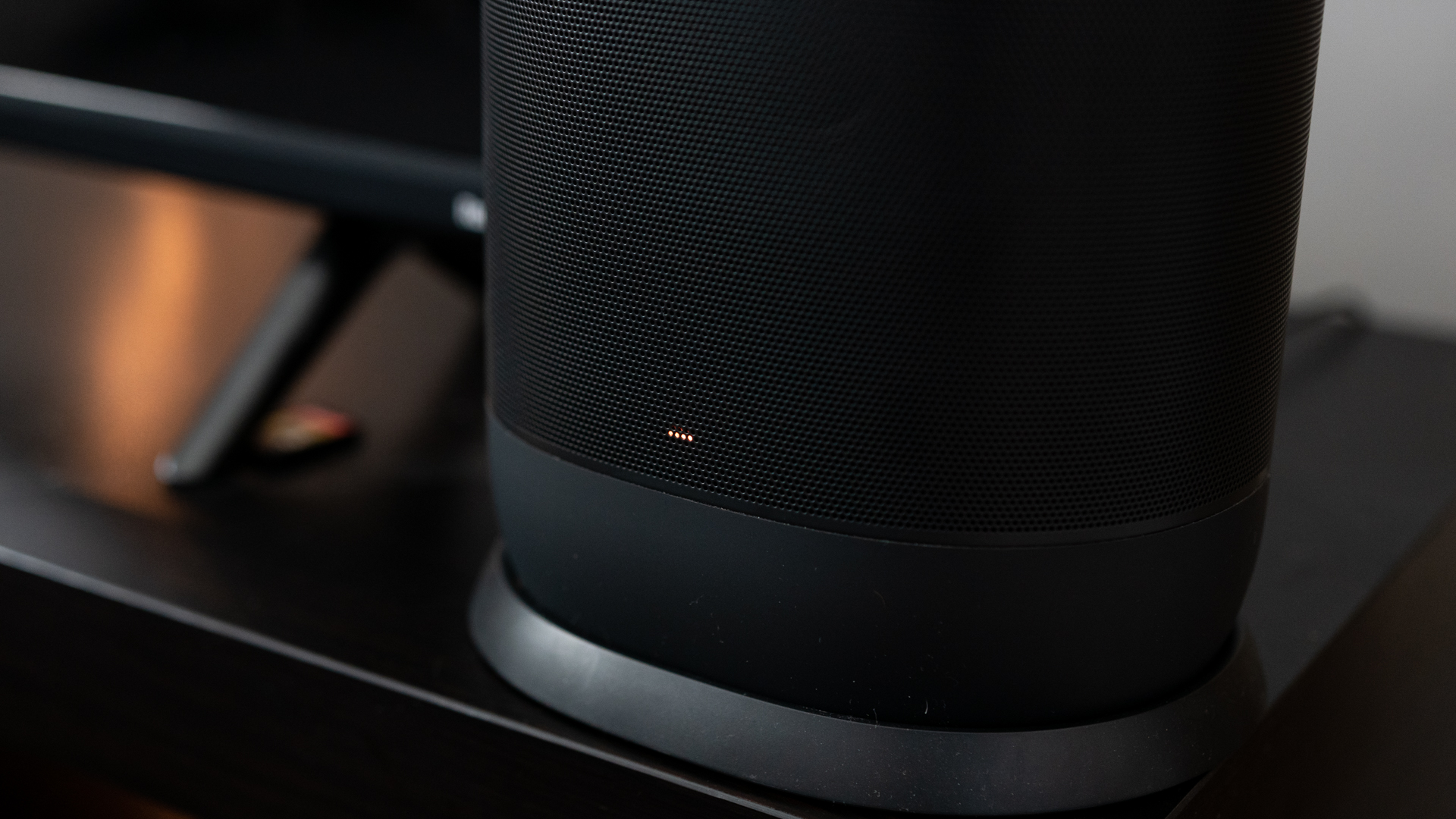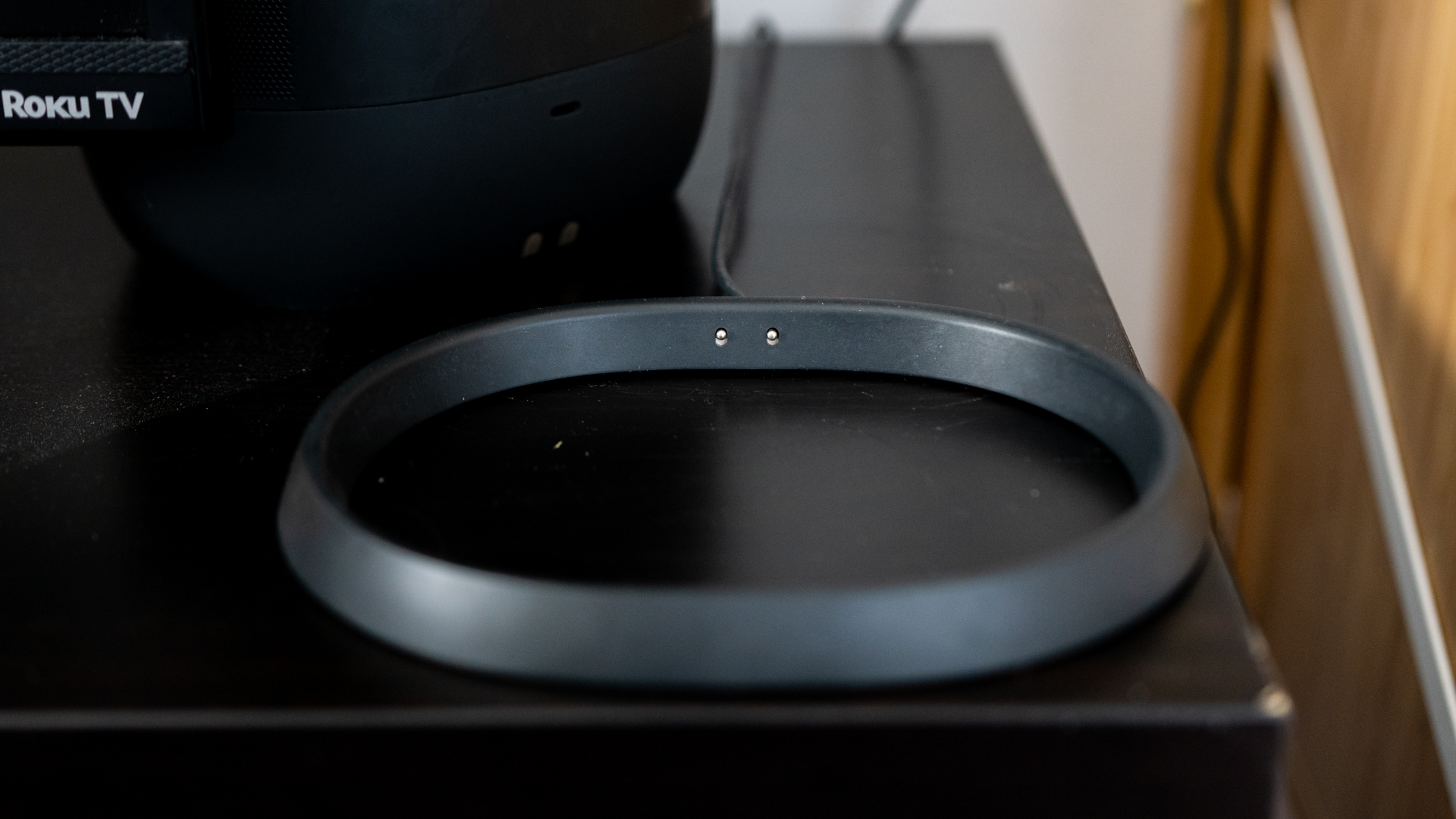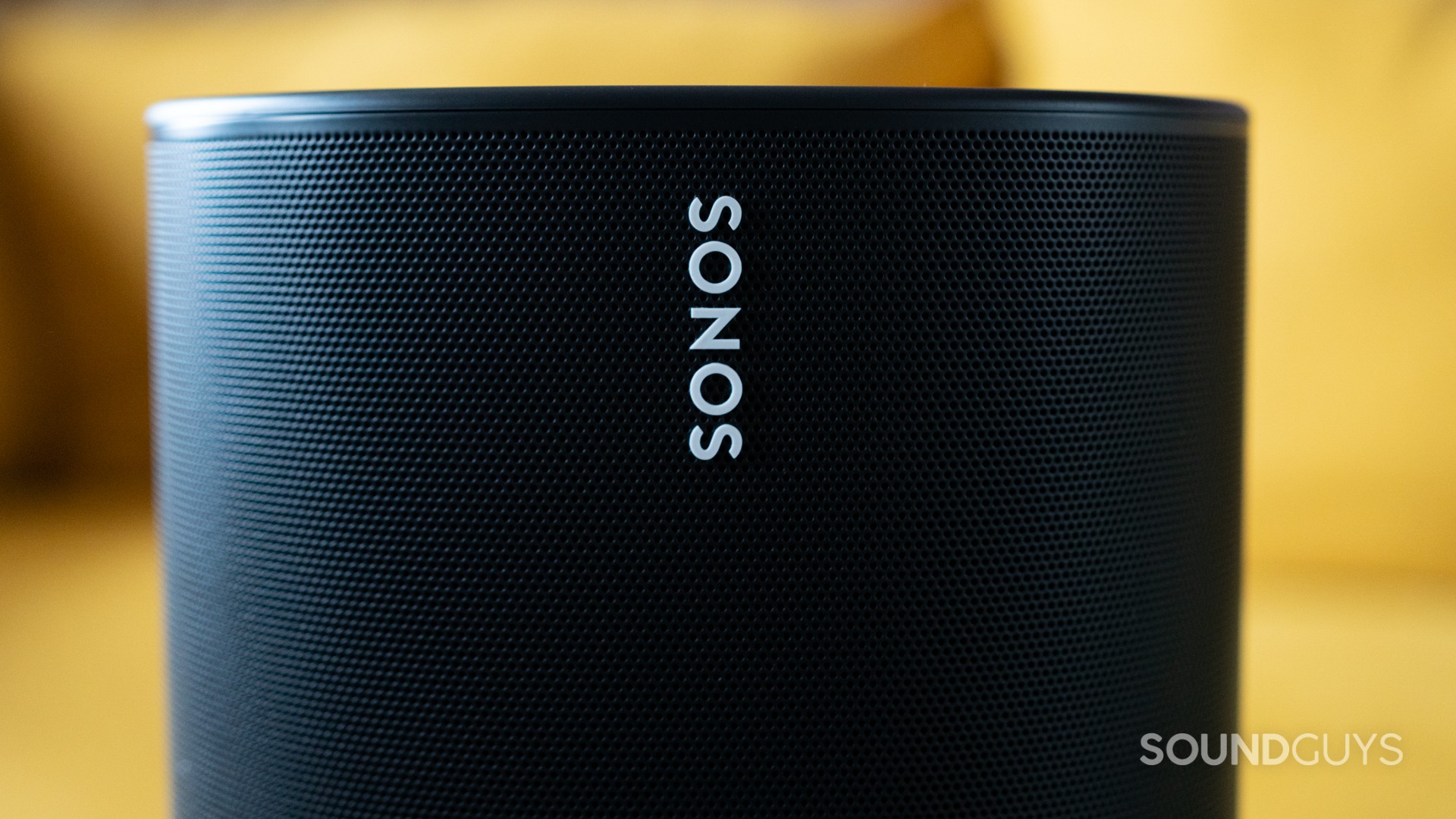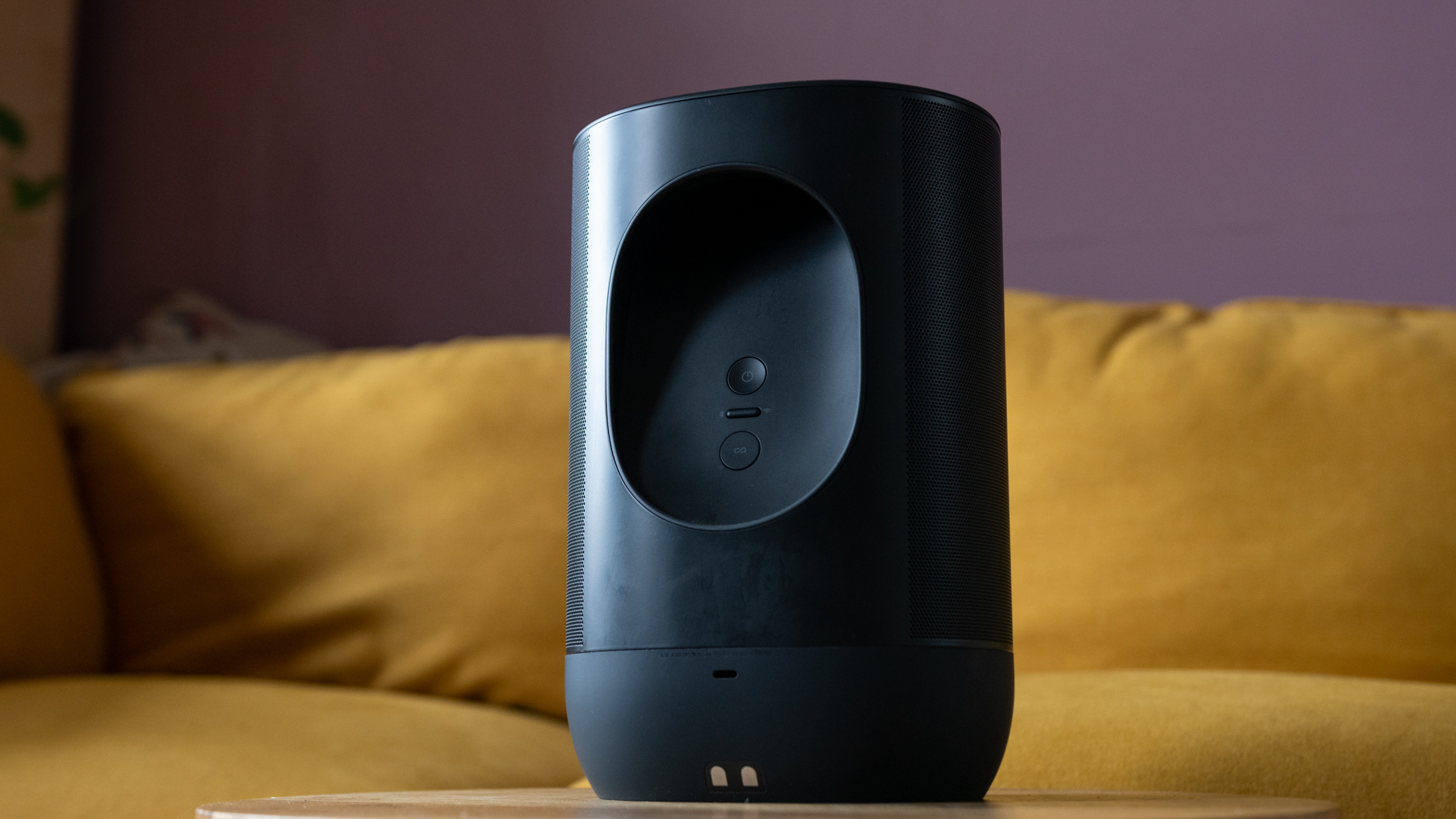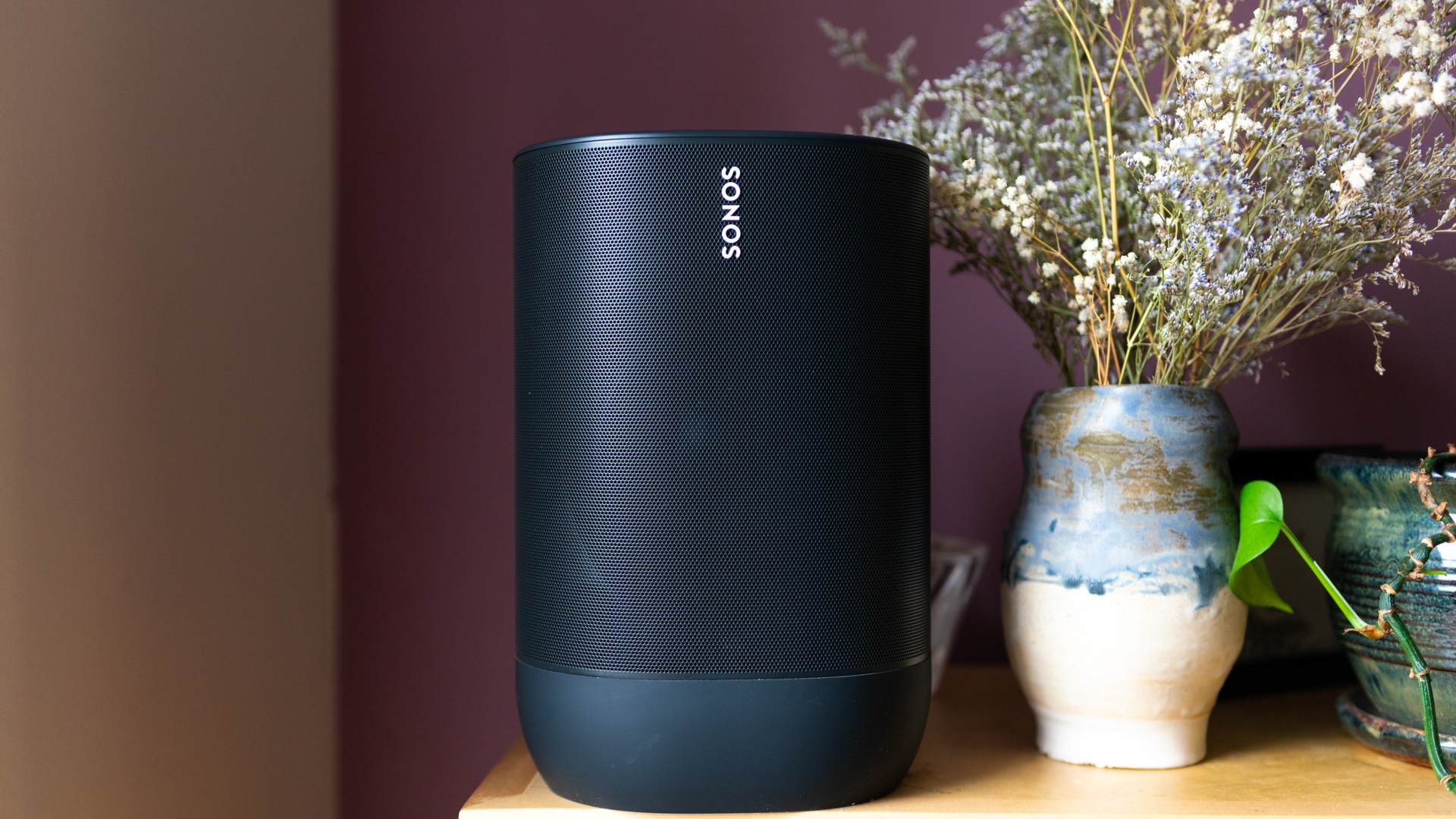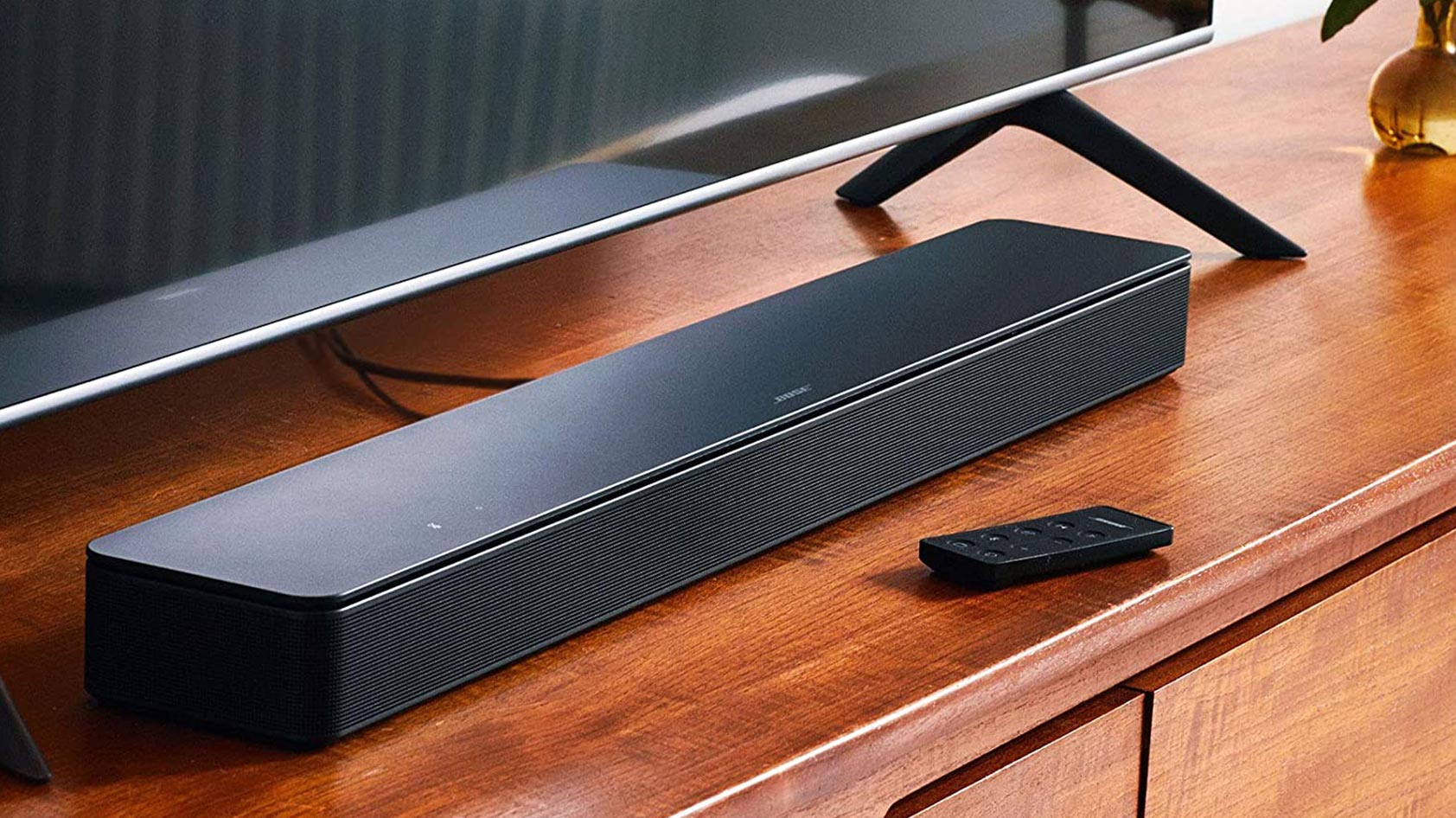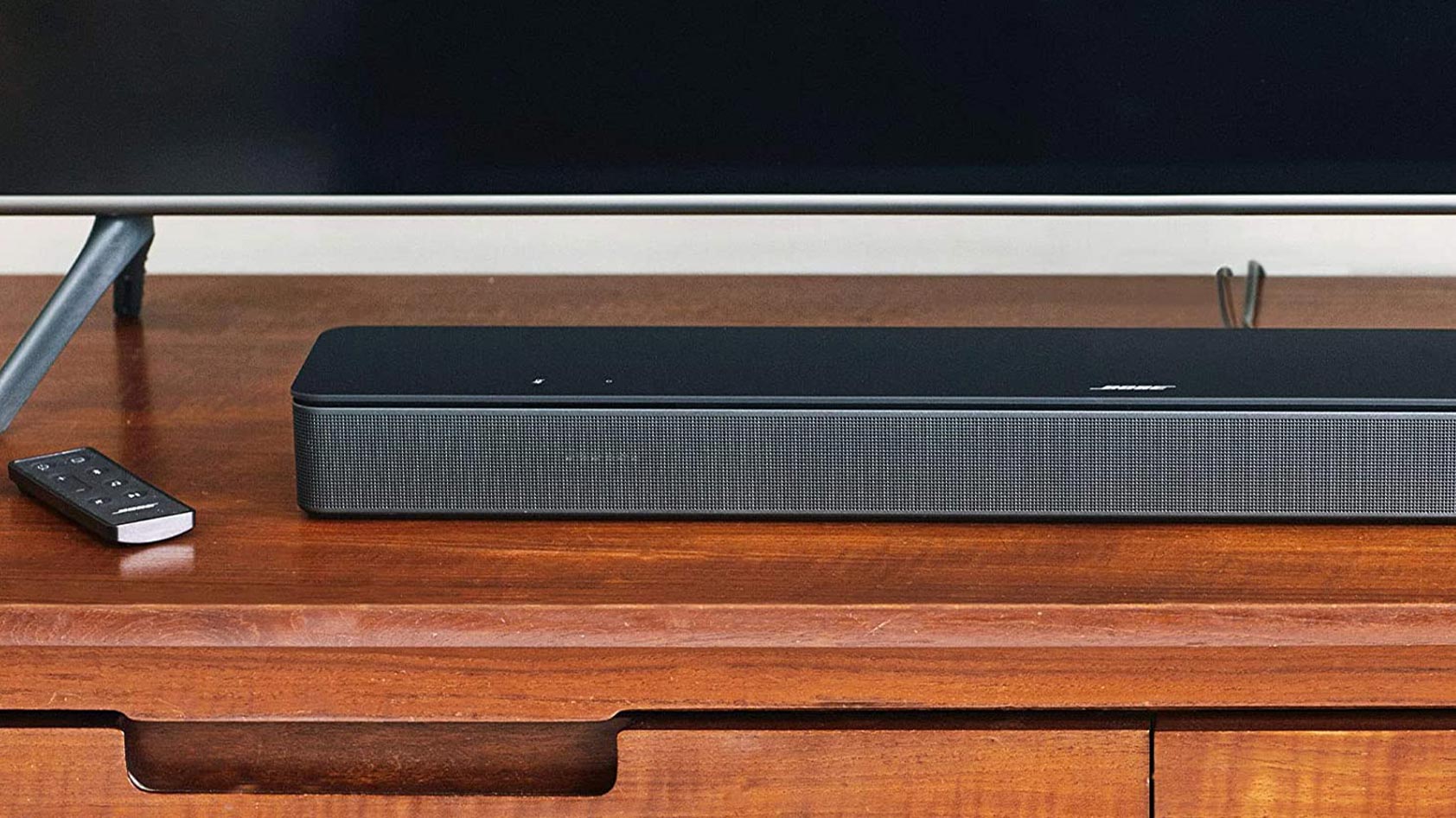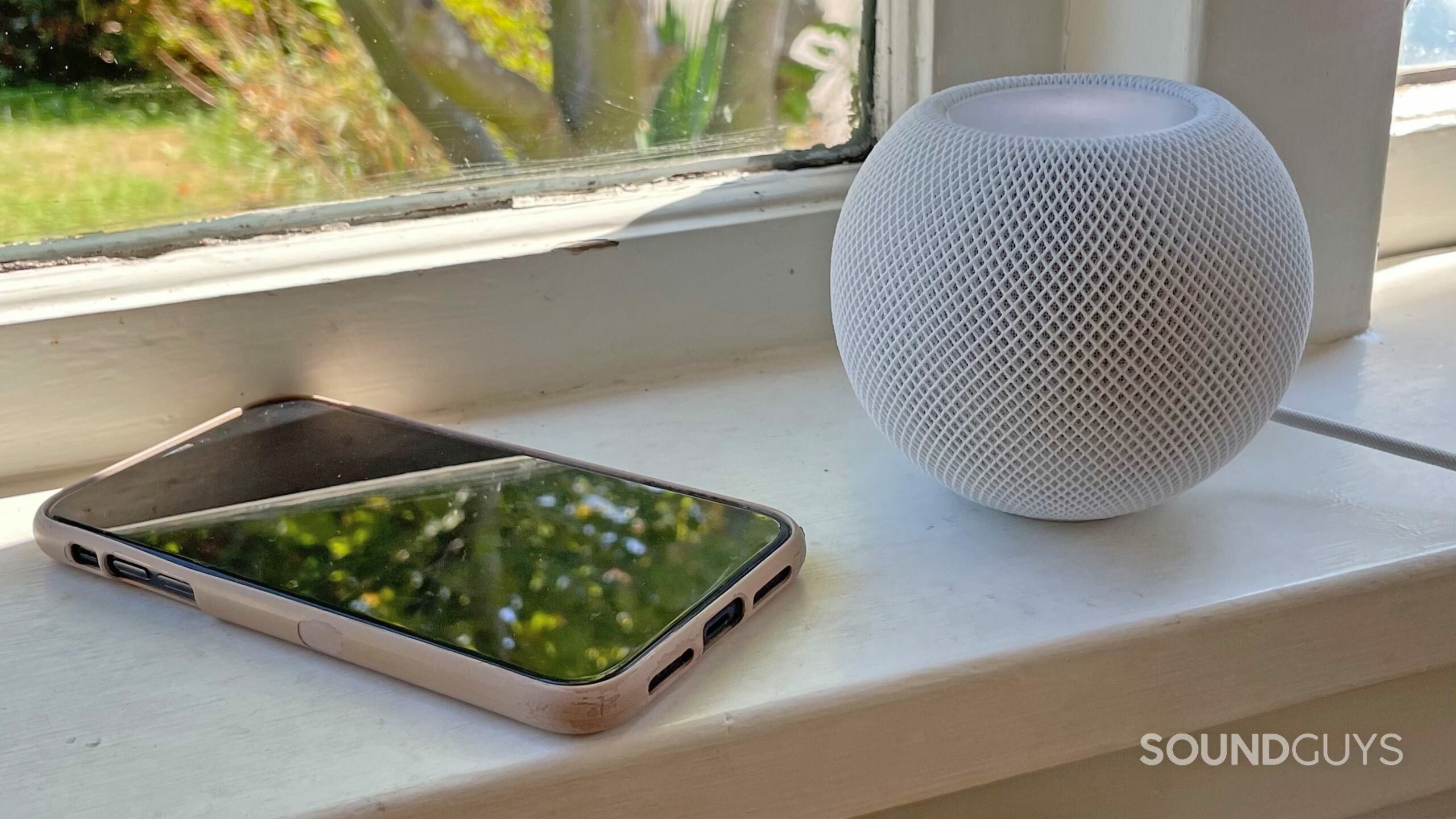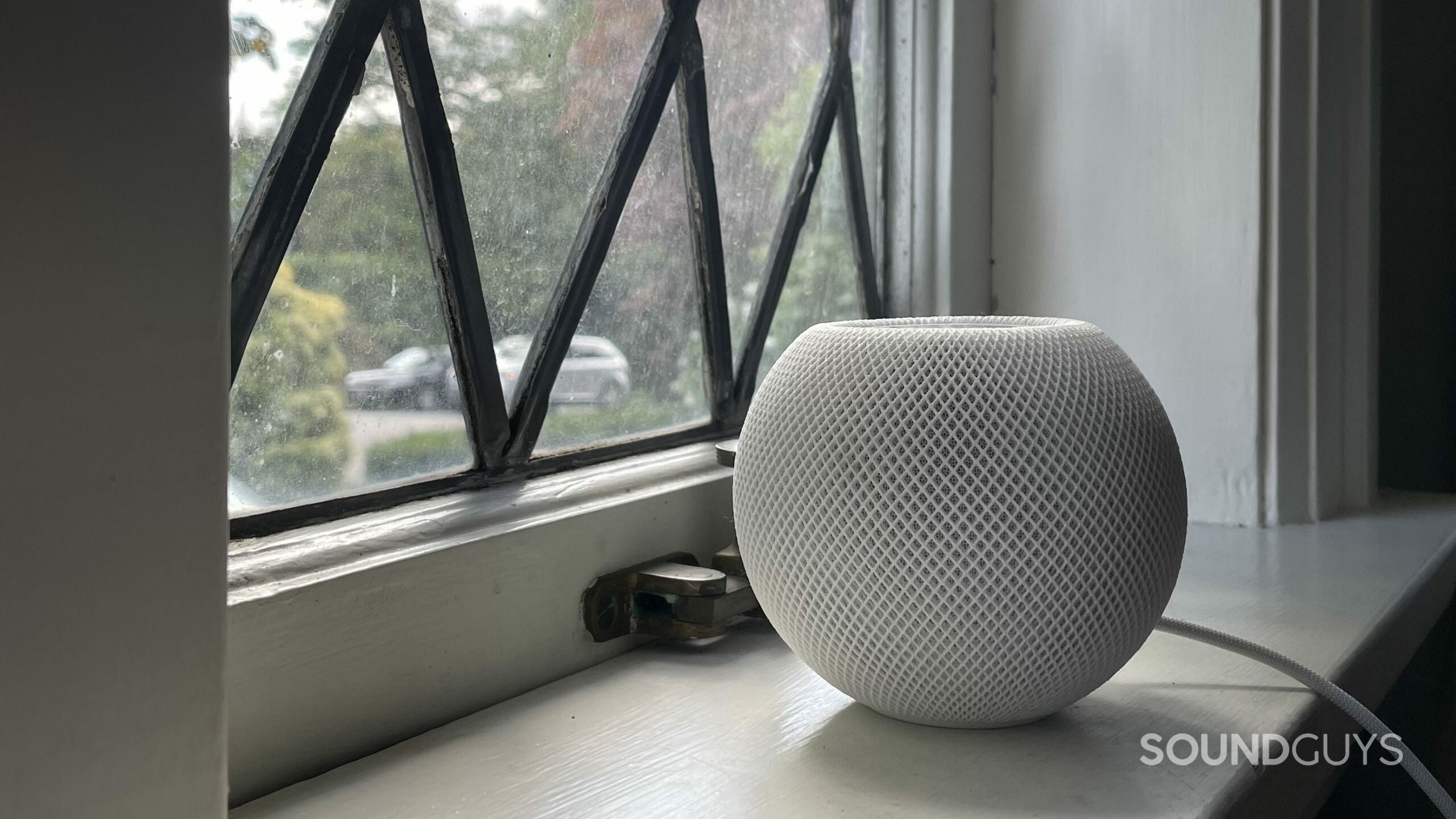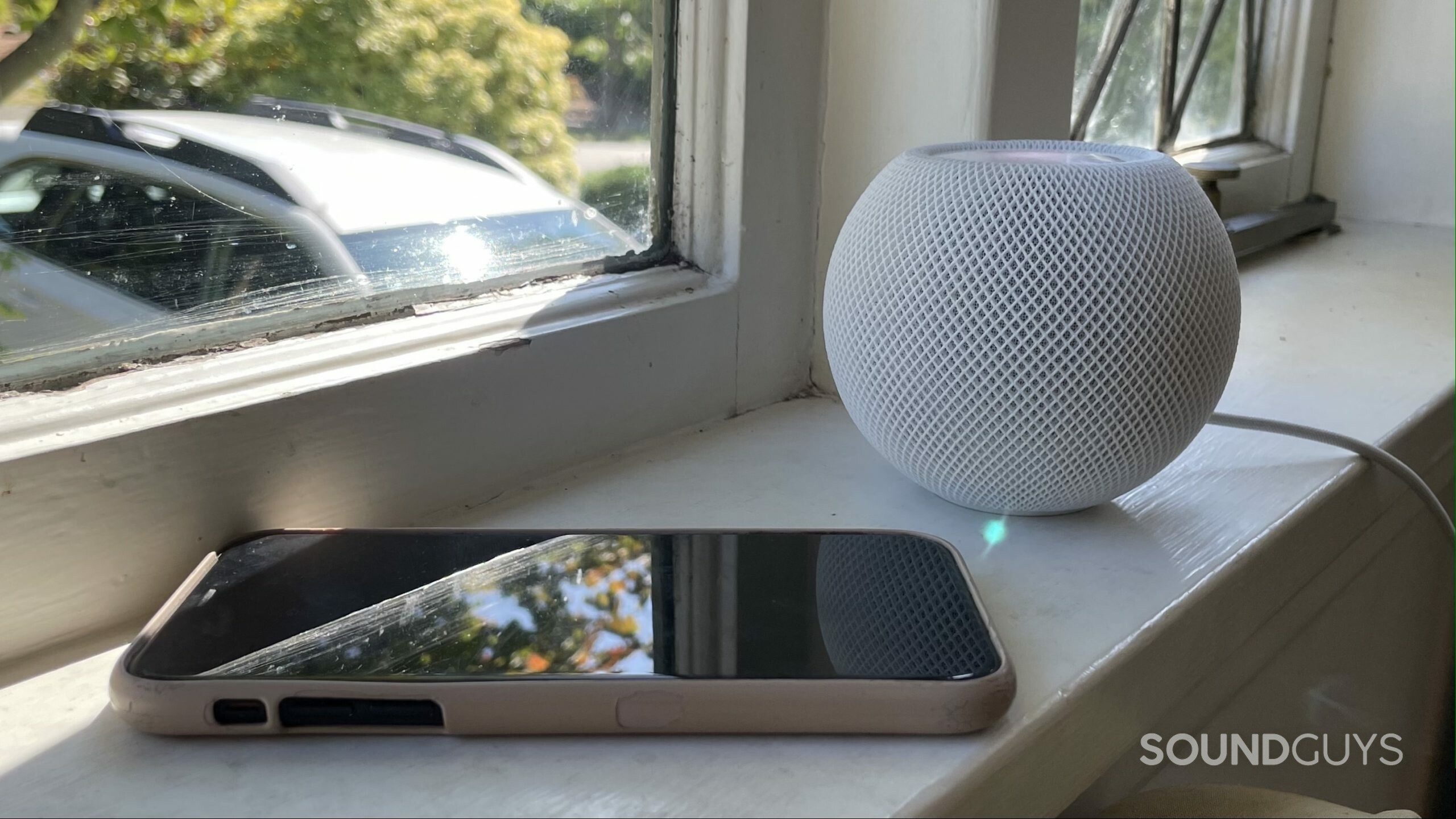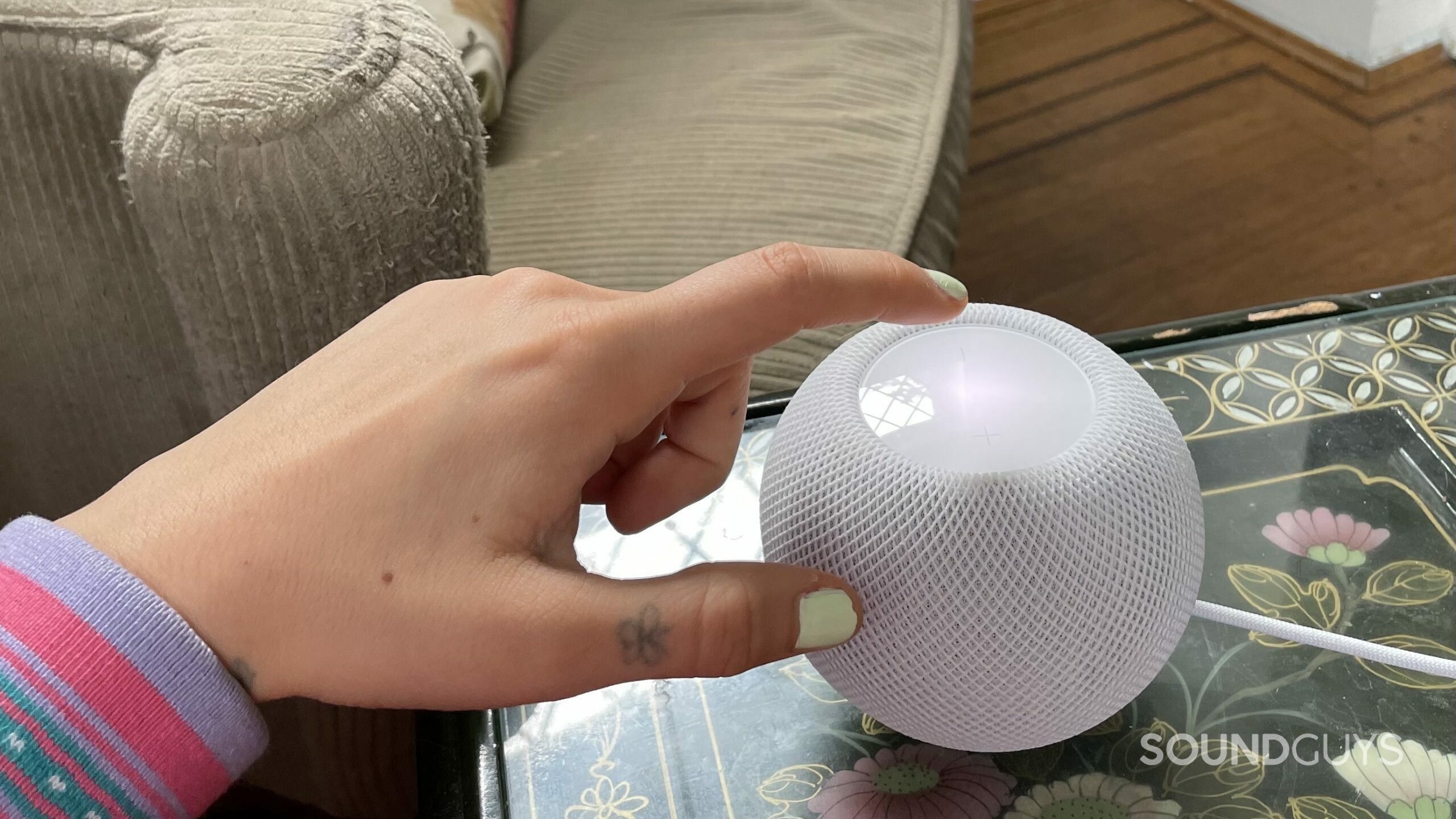Affiliate links on SoundGuys may earn us a commission. Learn more.
Best smart speakers
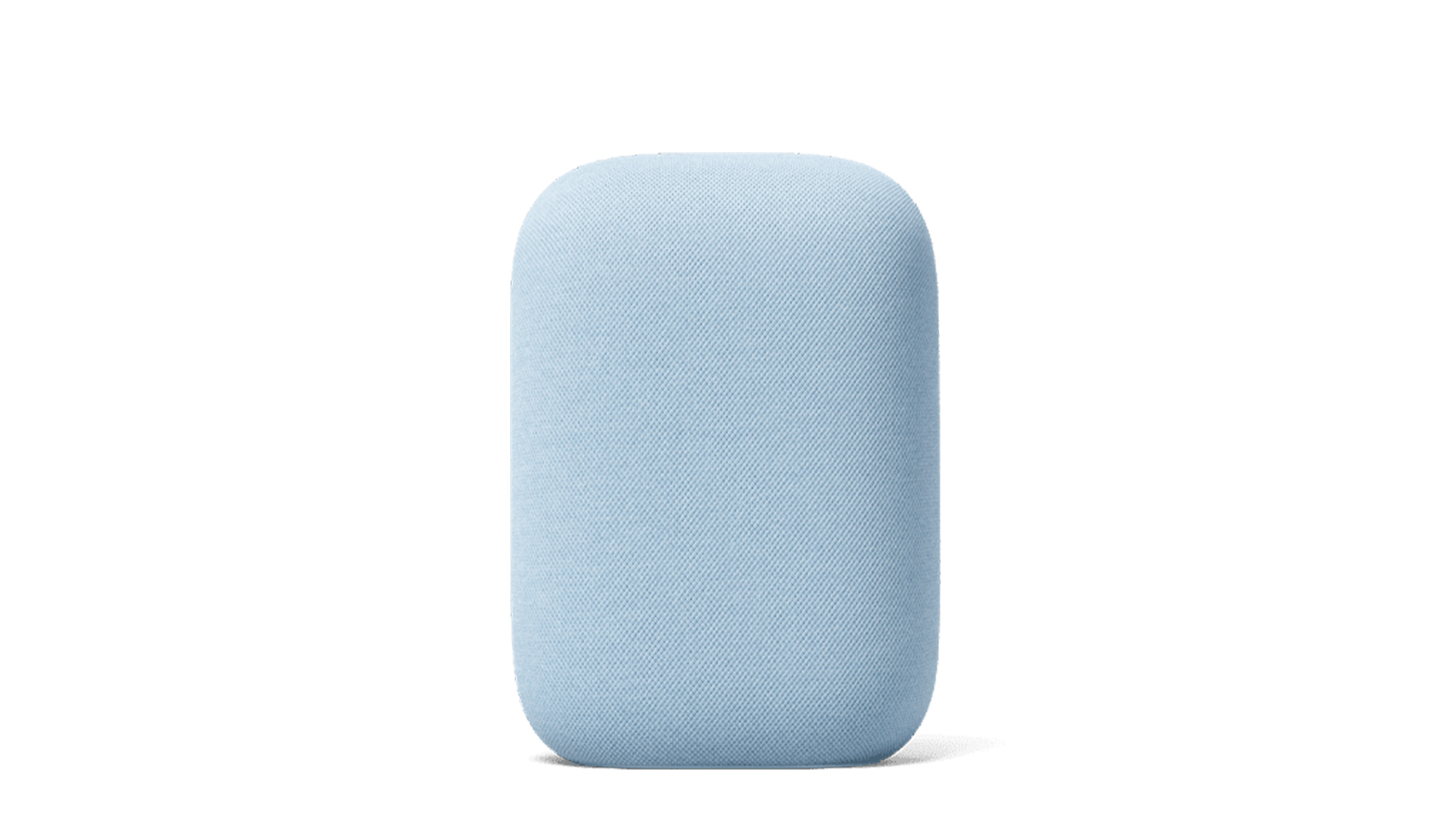
![Amazon Echo 4th gen [hero] The Amazon Echo in black against a white background.](https://www.soundguys.com/wp-content/uploads/2020/11/Amazon-Echo-4th-gen-hero.jpg)
![Sonos Move[1]](https://www.soundguys.com/wp-content/uploads/2019/12/Sonos-Move1.jpg)
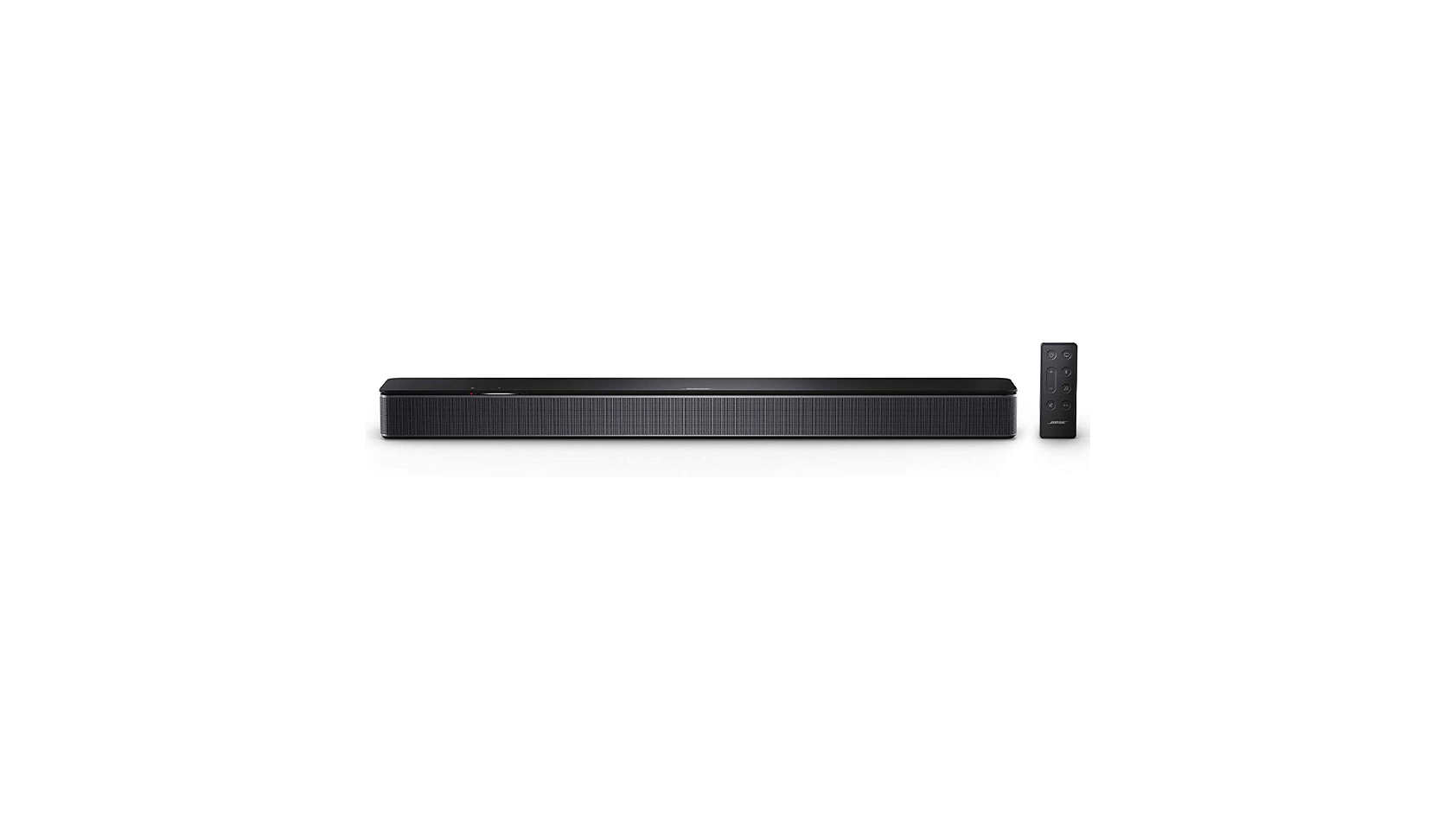
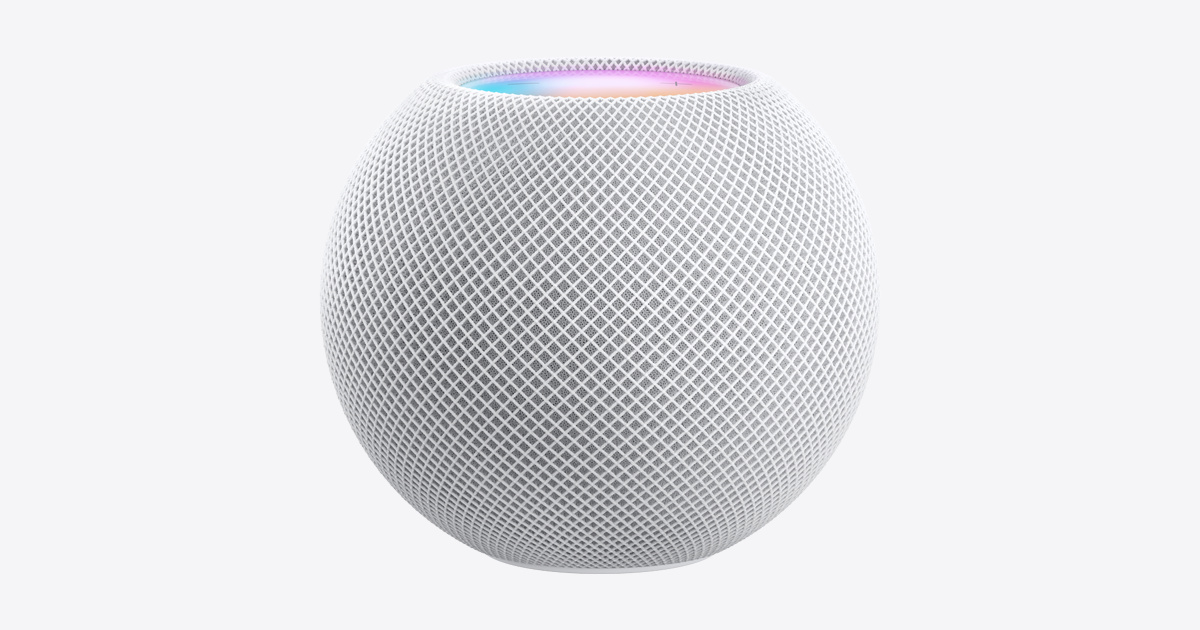
Knowing what to look for when picking out a smart speaker is hard. After all, there are many options for each interface, be it Google, Amazon, or Apple. Today, we’re breaking down the best smart speakers for your needs and have listed something for everyone.
Editor’s note: this list of the best smart speakers was updated on July 18, 2022, to replace the Harman Kardon Invoke with the Bowers & Wilkins Zeppelin as a highlight pick.
Why is the Google Nest Audio the best smart speaker?
The Google Home line of speakers has been discontinued, but the Google Nest series is still in business. The Google Nest Audio supports stereo and multi-room playback. Its sound quality is pretty good considering its small size, but keep in mind that it won’t have a booming bass sound because of its stature. The Nest Mini has two smart features called Media EQ, which adjusts the sound signature of the speaker depending on what type of media it is playing, and Ambient IQ, which adjusts the volume of spoken-word media based on the level of ambient noise in the room. You can set a custom EQ for your speaker in the Google Home app, but its capabilities are pretty limited.
Setting up Google Nest devices is wonderfully simple. Just download the Google Home app from the app store and you’re walked through the entire process. Once you’re all set up, you can ask it questions, have it stream from your favorite music and radio services, and set reminders. If you have other Google Assistant devices connected to your account, you can also tell Google Assistant to control them. For instance, saying, “Hey Google play The Good Place on Netflix,” will initiate streaming without you picking up the TV remote.
Just like Amazon Alexa smart speakers, you can control your smart home with the Google Nest Audio. Compatible smart brands include Honeywell, Nest, Insignia, Hue, and more. According to Google, its speaker works with an excess of 5,000 smart products from over 150 brands. You can set up the Nest Audio so it only responds to pre-programmed voices, that is, it will differentiate between you and your housemate’s voices when asking a question.
Next on the list is the Amazon Echo (4th Gen), which compares well against the Google Nest Audio.
Smart home fanatics should get the Amazon Echo (4th Gen)
Amazon has a firm hold on the internet of things (IoT) market. If any of your friends are scoping out the smart speaker market, they’ve likely considered getting an Echo or the smaller Echo Dot. The new ball-shaped fourth-generation model is a great choice for anyone in need of great sound quality and smart home functionality.
The Amazon Echo (4th Gen) has better sound quality than its predecessors and serves as a smart hub and temperature sensor. The former lets you easily connect with and control Zigbee-enabled smart devices, including light bulbs, door locks, and more, without needing an external hub. It eliminates the need to purchase a separate hub or configure a dedicated smart home skill, which can be confusing for first-time smart home users. Instead of creating a custom skill, you can intuitively say, “Alexa turn on device name.” It’s also a great option for parents, as you can apply kid-friendly controls to filter explicit content and set time limits.
You can also turn the microphone off to preserve some sense of privacy. Of course, you can also go the opposite direction and use the Alexa-enabled devices in your home as an intercom system. Other great features include creating a custom EQ or pairing with a secondary Echo (4th Gen) for stereo listening. If you’re looking to take full control of your smart home, the Echo (4th Gen) is among the best smart speakers you can get.
The Sonos Move works with Google and Alexa
If you’re going to invest in a third-party pick, Sonos makes the best smart speakers. The Sonos Move is compatible with both Google Assistant and Amazon Alexa. In addition, if you have multiple Sonos smart speakers and/or Amazon Echo speakers, you can group them all by the rooms in your house. Using the Sonos app is easier than pie and the speaker itself is operated through touch controls on the top.
The Sonos Move can operate over Wi-Fi or Bluetooth, and it’s a portable speaker. You charge it in a cradle that you can also just use to hold it if you don’t plan to take it out of the house. It does have an IP56 rating, though, so even if you don’t want to take it outside you could take it in the bathroom to listen to your jams while in the shower. It is a bit too bulky to be portable, but if you’re just planning on taking it to the beach, it’s a good companion.
The Bose Smart Soundbar 300 turns your dumb TV into a smart one
The Bose Smart Soundbar 300 is one smart soundbar. It has all the perks of the Bose ecosystem, meaning you can pair it up with other Bose speakers for multiroom playback. Using the Smart Soundbar 300’s Voice4Video feature, you can control your TV by telling Alexa or Google Assistant what to do. You can also use the soundbar to take calls from other Bose smart devices or Amazon Echo devices. The Smart Soundbar 300 also supports Spotify Connect and Apple AirPlay 2, so it’s easy to stream music from the soundbar as well as movies.
[best_product_www.title id=”4″][/best_product_title]
Listeners benefit from an HDMI ARC output as well as an optical audio port. Additionally, you’re not beholden to Wi-Fi streaming and can listen via Bluetooth, too. The sound quality is excellent thanks to the 4 acoustic drivers, the center tweeter that hones in on voices, and Bose’s smart real-time tuning technology. You can always buy add-ons as well, like subwoofers and surround sound speakers, to improve your experience.
Apple fans should check out the Apple HomePod mini
Alexa and Google are all well and good, but smart speakers from these brands won’t seamlessly integrate with your iPhone the way the Apple HomePod mini does. This small and spherical home speaker uses Siri as its smart assistant, and you can ask Siri questions and give it commands like sending a text or streaming Apple Music. If you use Spotify rather than Apple Music, don’t fret. It’s easy to AirPlay any audio content directly from your iPhone or any other Apple device to the HomePod mini by holding your device close to the speaker.
If you want to truly convert your home into a smart home, get multiple HomePod minis. In the Apple Home app, you can assign each HomePod mini to a room and add each member of your household to a group. If you enable the Personal Requests feature, the Apple HomePod minis will be able to distinguish each member of your household’s voice and fill out requests based on who makes them.
The HomePod mini is an omnidirectional speaker and sounds identical regardless of the angle you are listening to it. For such a small speaker, it sounds very good and has a powerful bass response fit to please most consumers. At $99, this speaker is a pretty good catch.
The Bose Portable Smart Speaker really is quite portable
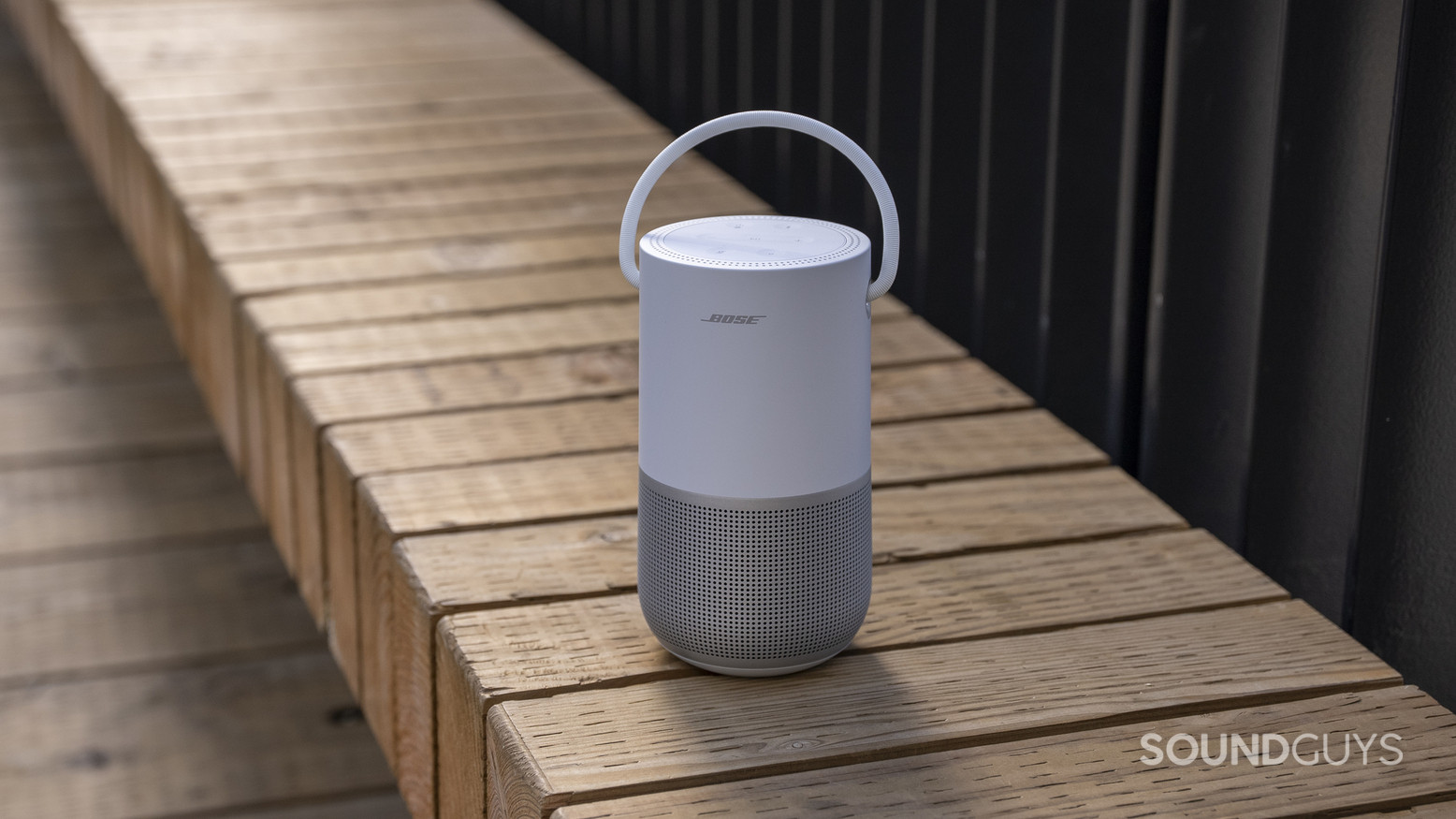
While we love the Sonos Move for its capabilities and design, there’s no denying that it’s a bulky, heavy monster. If you like all that the Move offers but wish it was a bit smaller, the Bose Portable Smart Speaker makes sense as a clear alternative. This, too, costs $399 USD and supports Wi-Fi and Bluetooth connectivity. Unlike the Sonos Move, the Bose’s speaker has just an IPX4 rating which is pretty standard.
The setup process is much easier than any Sonos smart speaker we’ve reviewed, and you can use the Bose Music app to manage all of your modern Bose products. The default sound is reasonably bass-heavy, which is a rare, appealing feature for a speaker this size.
Get great looks and good sound with the Bowers & Wilkins Zeppelin
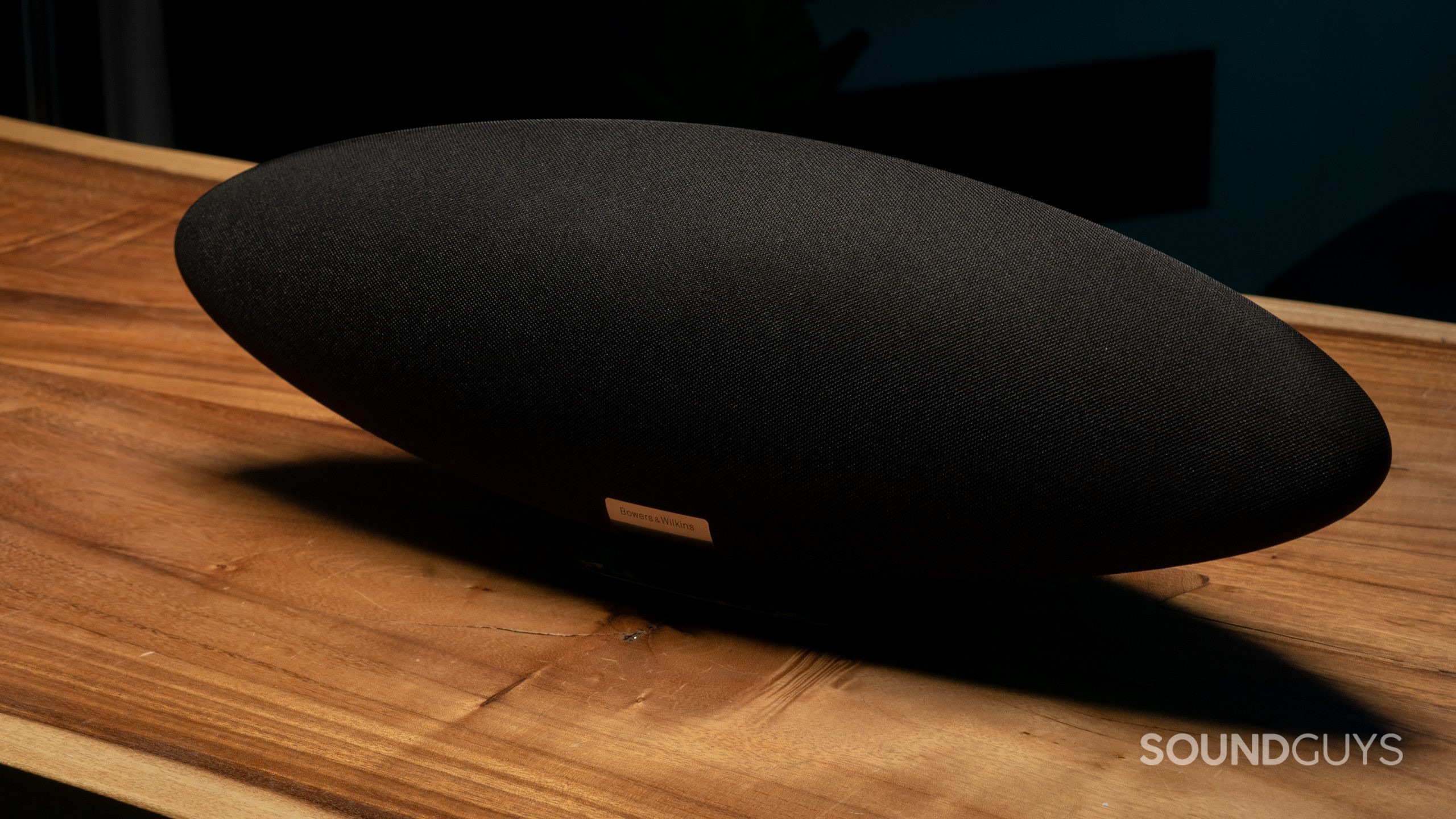
The Bowers & Wilkins Zeppelin is big and expensive. But it undoubtedly looks great and sounds good. Bucking the trend for many smart speakers with Bluetooth, it supports aptX Adaptive, AAC, and SBC, so both iOS and Android users get high-quality Bluetooth codecs to use. The Zeppelin only supports Amazon Alexa, but if you already use this smart assistant, don’t mind spending nearly $800 USD, and want a smart speaker that also boasts impressive sound and outstanding aesthetics, the Zeppelin fits that niche well. Be aware this speaker can be a hassle to get connected for the first time. Furthermore, the Bowers & Wilkins Music app is only compatible with a few streaming services.
The best Smart speakers: Notable mentions
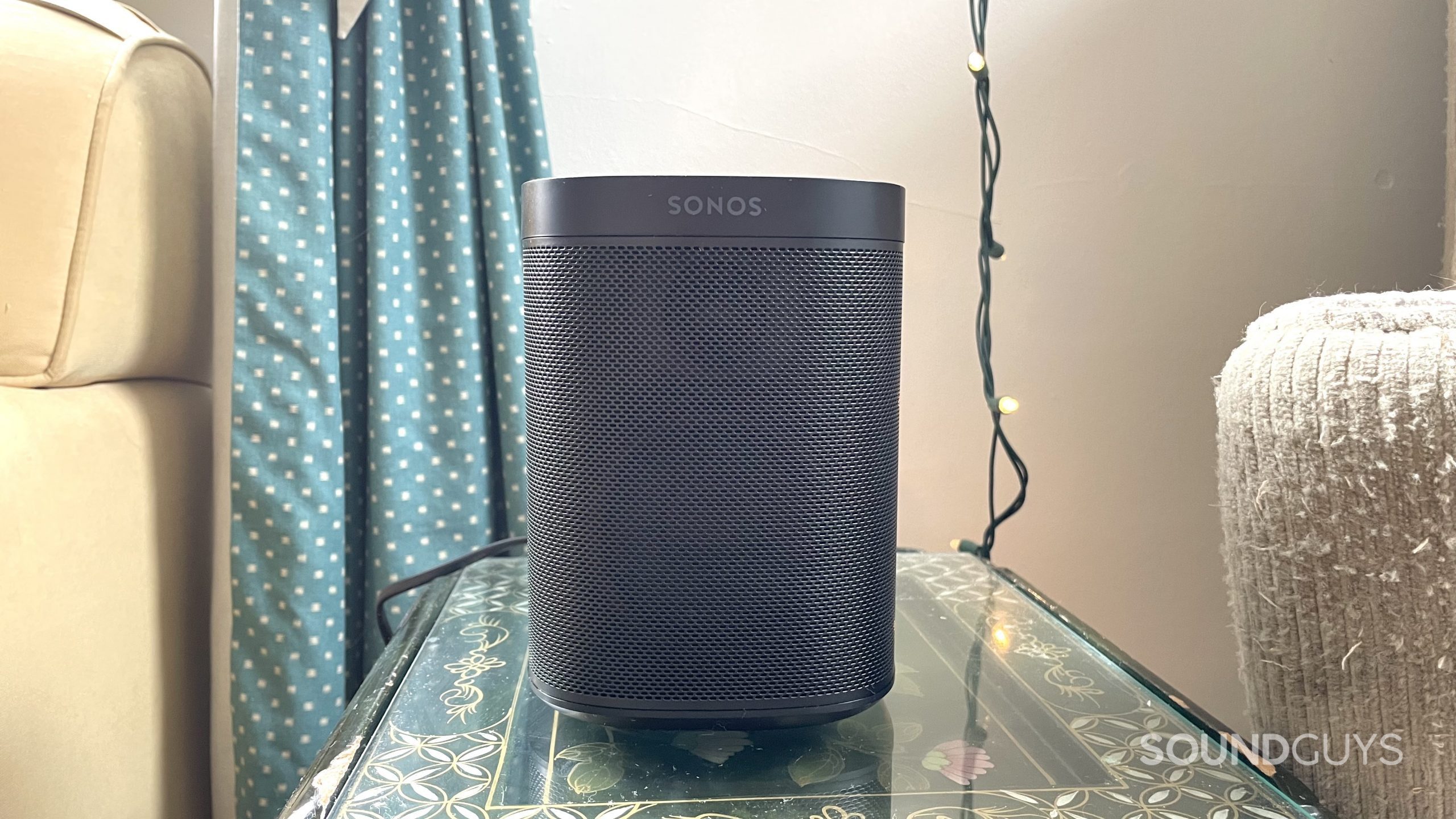
- Amazon Echo Studio: At just under $200 USD the Echo Studio offers spatial audio for folks with Amazon Music Unlimited. It also tunes to suit your room, which is a great feature. With all that said, it’s frequently out of stock.
- Google Nest Mini: Do you just want to dip your toe in before committing to a smart home? The Nest Mini sells for about $25 USD. You miss out on the best quality sound, but you can access all the basics of Google Assistant.
- Marshall Stanmore II: Recently, the guitar amp company has been branching into audio products. If you’re an Alexa enthusiast and prioritize volume, this speaker punches above its size at 50 watts. It’s not portable, but tactile EQ knobs are nice when you want to quickly make quick adjustments.
- Sonos One (Gen 2): This home smart speaker is compatible with both Google Assistant and Amazon Alexa. It also supports streaming over Apple AirPlay 2. You can pair two together for stereo sound, and it’s all operated easily through the Sonos app.
- Sonos Roam: This little speaker is only available for pre-order until May 2021, but it offers both Wi-Fi and Bluetooth support, an IP67 rating, a 10-hour battery life, and can be hooked up to your existing Sonos ecosystem.
- UE MEGABLAST: If you’re looking for a smart speaker that you can take anywhere, this IP67-rated speaker may be the one for you. It operates over Wi-Fi and Bluetooth, depending on whether you’re home or out and about.
Hold up! Something’s different:
Some of our picks’ frequency response chart was measured with our old testing system. We have since purchased a Bruel & Kjaer 5128 test fixture (and the appropriate support equipment) to update our testing and data collection. It will take a while to update our backlog of old test results, but we will update this article (and many others!) once we’re able with improved sound quality measurements and isolation performance plots. These will be made obvious with our new chart aesthetic (black background instead of white).
We’ve also made a big improvement to how we demonstrate the microphone performance of products we review. These will be made obvious in each new sample which begins with the phrase, “This is a SoundGuys standardized microphone demonstration …”
Thank you for bearing with us, and we hope to see you again once we’ve sorted everything out.
What should you know before getting a smart speaker?
Smart home devices are a green market. Even the most ubiquitous platform, Alexa, isn’t without its common problems. That said, don’t get too frustrated. It’s typical for users to experience hiccups, but one of the best things about smart speakers is that the firmware is frequently updated. Sometimes, you even benefit from market updates like when Sonos allows for Google Assistant support on its speakers which originally only supported Alexa.
Before we get too deep, let’s take a look at what you need to know when picking out your gear.
Which is better, Amazon Alexa, Microsoft’s Cortana, or Google Assistant?
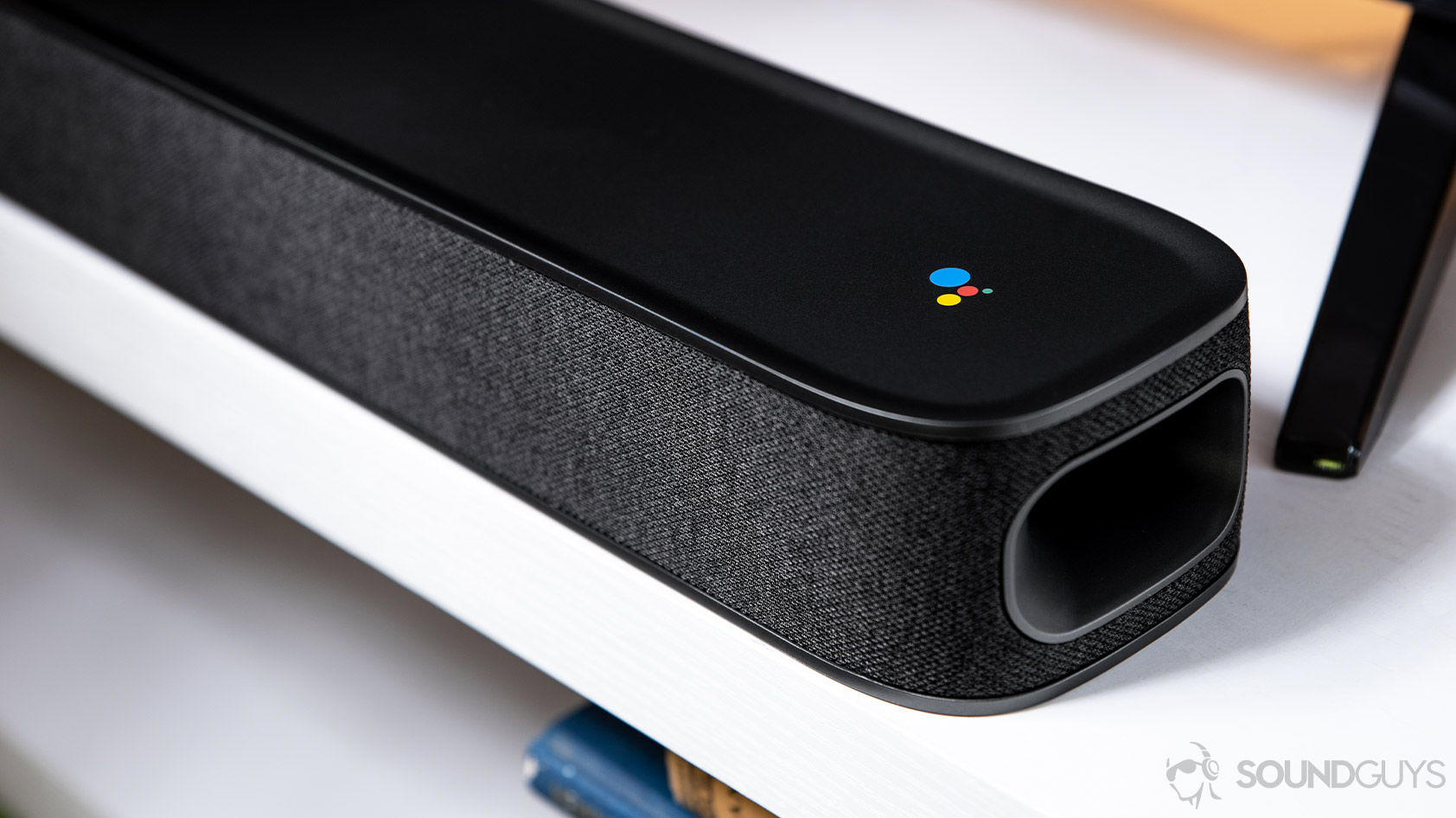
That’s like asking whether chocolate or vanilla ice cream is better. All options have their place, and each person has their preference. One thing’s for sure, though, it’s easier to stick with one persuasion of smart speaker. While you can get a Google and Alexa-enabled device, it’s more work than it’s worth. As you may expect, your two main options are Alexa and Google Assistant. You can set reminders, make appointments, inquire about the weather, and control smart home devices from both, but each has its pros and cons.
If you’re a frequent Amazon shopper, then the Amazon Alexa will make shopping easy breezy. It’s also currently the dominant smart home assistant and has a wide array of smart device support, with more products and skills added regularly. While Google is working to increase its command and skill support, Alexa had a significant jump-start and it shows.
If you want the most skills and greatest smart home control, get an Alexa smart speaker.
Google Assistant smart speakers are the smarter option for anyone who’s already invested in the Google ecosystem. If you’re a Pixel owner, it makes more sense for you to double-down on a Google smart speaker than an Alexa one. Although Alexa can execute more skills, Google’s sentence recognition is more advanced: it’s better at understanding context than Amazon Alexa products. You also benefit from Google Search technology, which is much more mature than Amazon’s functionality.
Now, Apple users may be wondering about the HomePod mini. Unless you’re a die-hard Apple fanboy we suggest going with either Google Assistant or Alexa. Cortana users, feel free to jump to the end of the list.
What about privacy concerns?
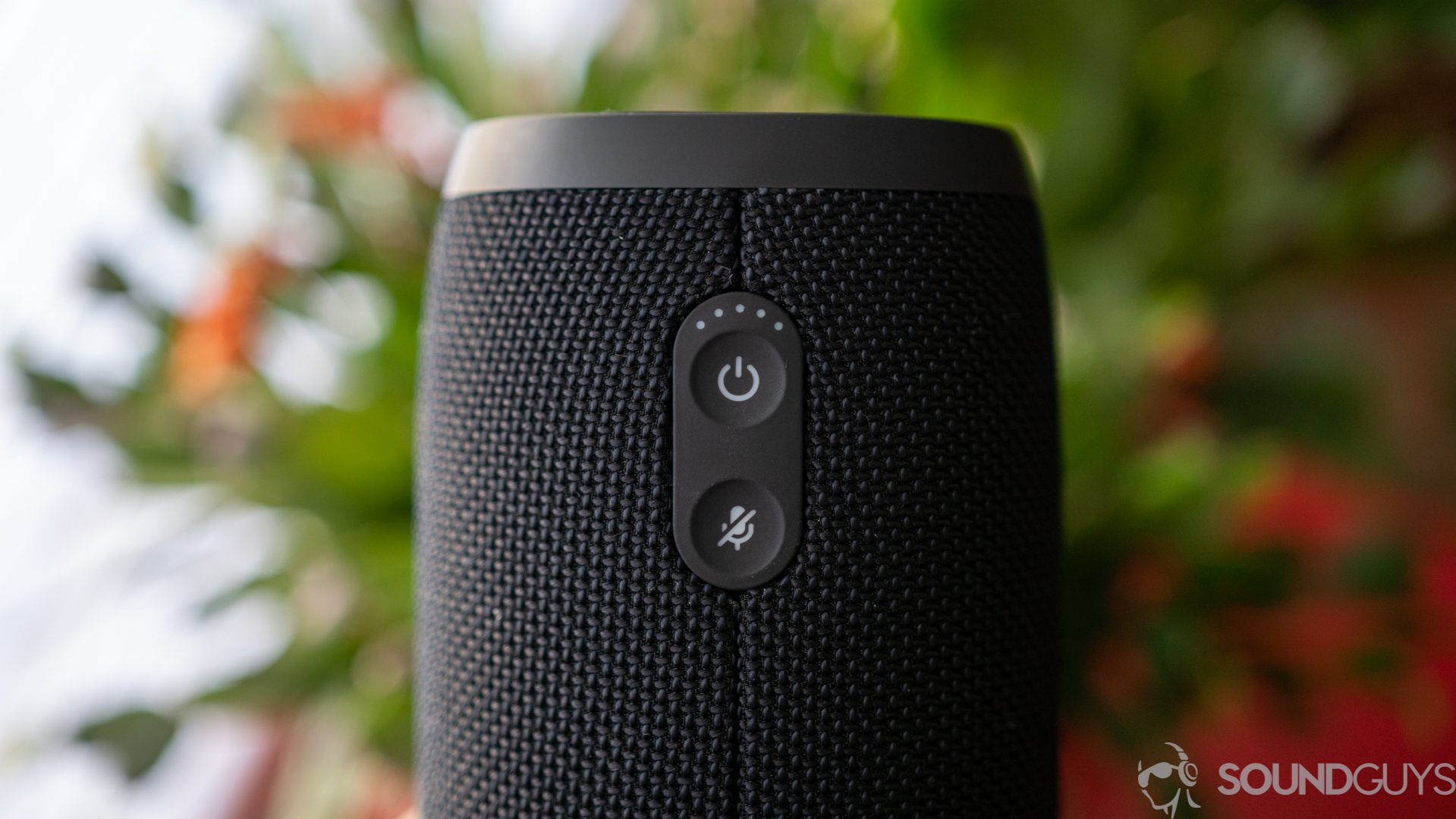
My tinfoil hat has gotten plenty of use this year thanks to smart speakers: consumers are legitimately concerned about smart speaker privacy invasion. Many of us feel that just because we’re letting a device into our home doesn’t mean we’re explicitly welcoming its constant recording of our lives.
Fortunately, each of the best smart speakers includes a mute toggle for deactivating the microphone. Even still, that may not be enough to assuage your worries. If you’re at a crossroads of wanting a smart speaker but not wanting it to record anything when inactive, you can always unplug it after each use. It’s a hassle but a minor inconvenience for getting the best of both worlds, so to speak.
Is streaming audio over Wi-Fi better than Bluetooth?
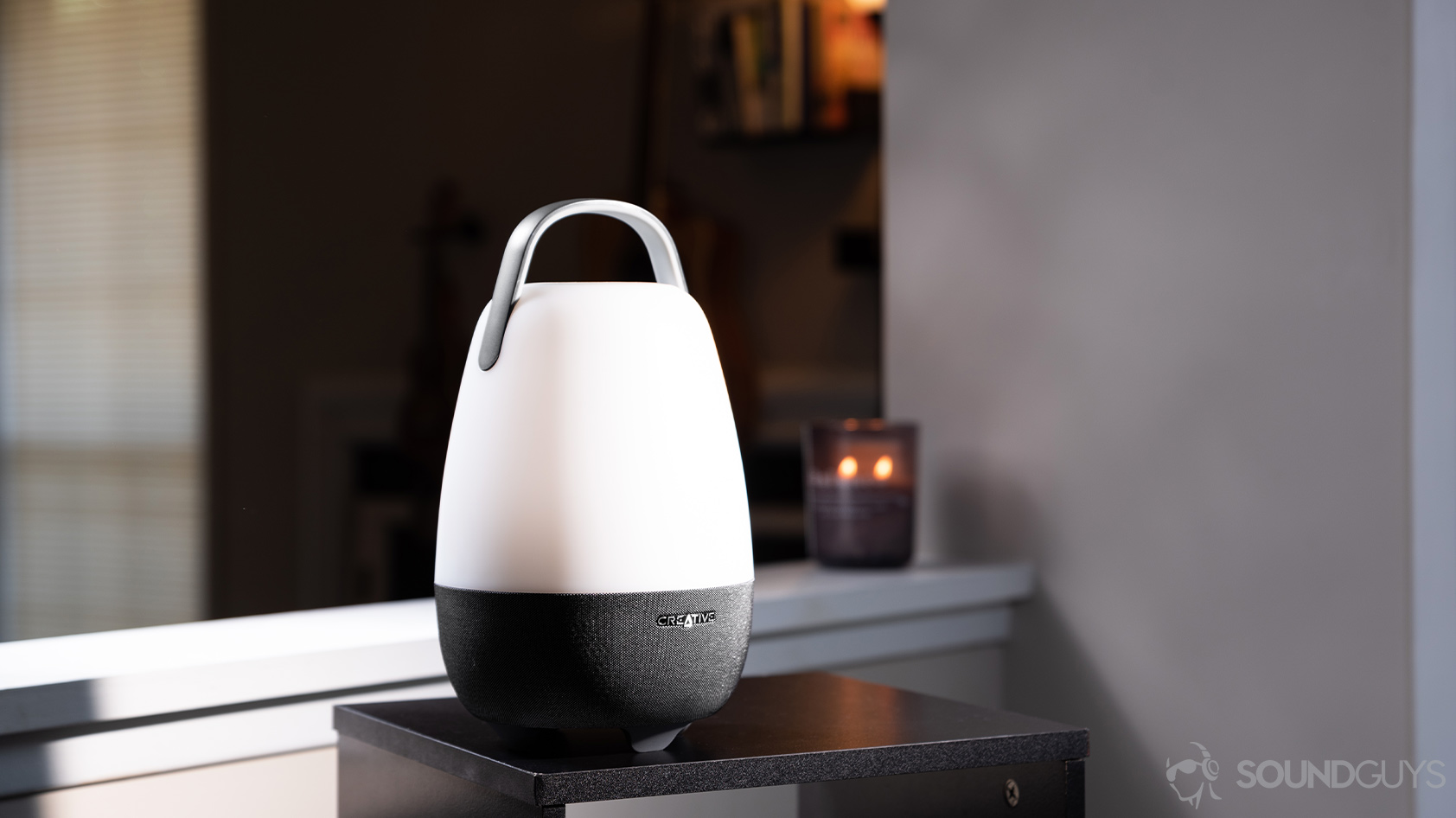
While Wi-Fi bandwidth is still limited, it widens the data pipes relative to Bluetooth streaming. You can enjoy hi-res 24-bit/96kHz audio, which is more than enough data for our brains to process.
As a matter of fact, 24-bit audio is an excess amount of data for us to perceive. Our ears can barely discern the difference between 16- and 24-bit audio, if at all. To anyone shaking their head, it does make a difference when recording audio that requires editing later on. Greater bit-depth allows for more flexibility in editing. What’s more, a 96kHz sample rate is more than we’re able to perceive, too. Our ears aren’t even sensitive enough to identify a difference between 44.1kHz and 48kHz, let alone 96kHz recordings.

What matters most is how a file was compressed: that’s where we’ll notice the biggest difference between files. If you’re listening to an uncompressed WAV file, you’ll likely hear a difference when compared to a basic MP3 file. If you’re a real stickler for audio quality, it may be worth investing in a high-resolution streaming service like Amazon Music HD.
Why you should trust SoundGuys with the best smart speakers
We understand audio as both an objective and subjective experience; therefore, we combine objective testing and experiential analysis for all reviews and best lists. We’re happy to inform readers of product features but ultimately want our readers to leave each article more educated about audio than before.
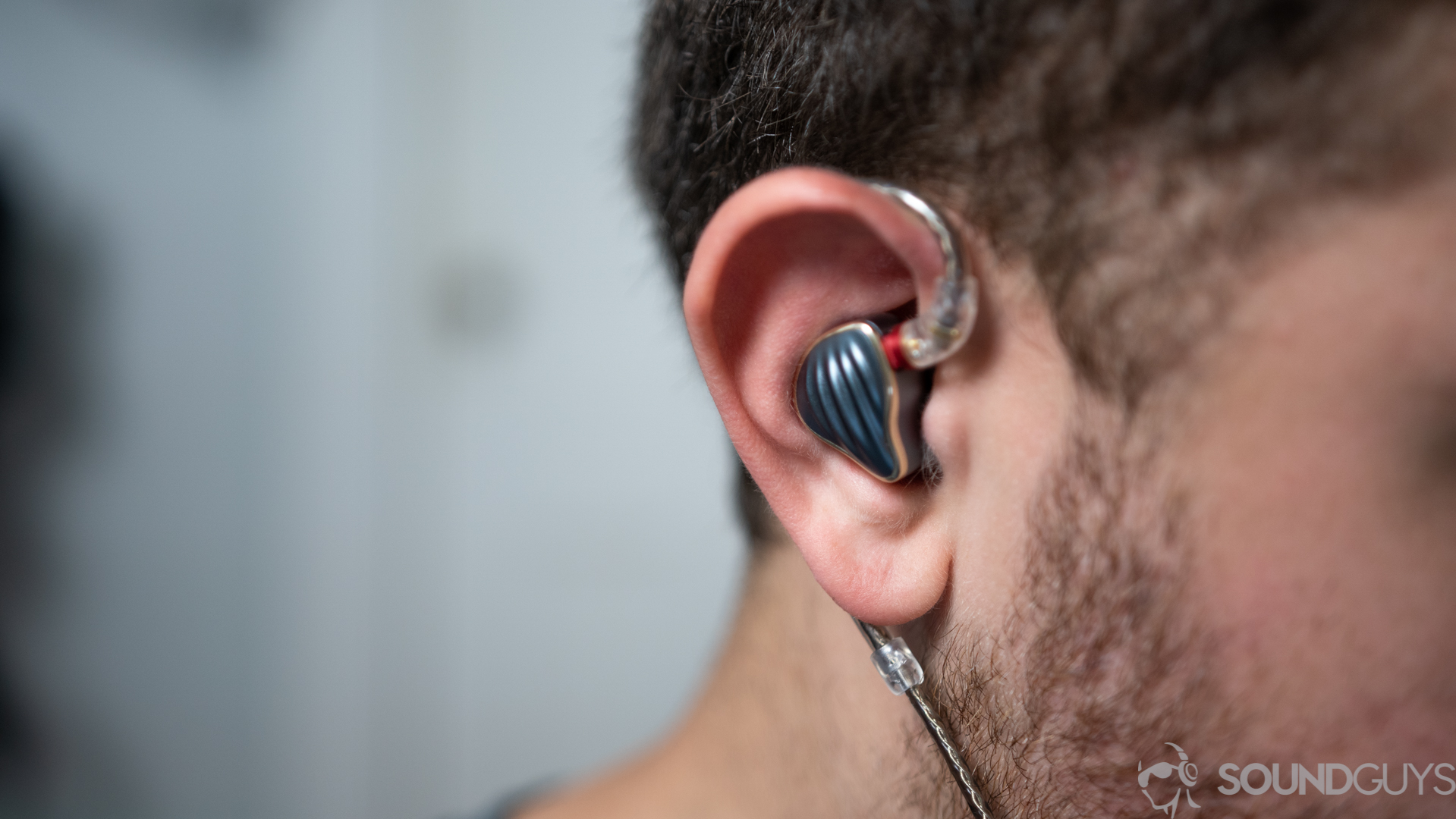
Like all other best lists, this too is a living document that will be continuously updated as new, worthy products are released. We acknowledge that a product may not be for you and, unfortunately, the perfect, one-size-fits-all best smart speaker doesn’t exist. However, we’re confident that most readers will find something to enjoy. Hopefully, you find something that suits your needs. If we missed one of your favorites, be sure to reach out and let us know.
Frequently asked questions about smart speakers
Yes, as of November 30, 2020, you can save $150 on the Google Home Max if you buy it from Best Buy.
Alexa-enabled smart speakers can play live radio so long as you enable the radio skill in the Alexa app. Google Assistant-enabled speakers play live radio through an app called TuneIn that can be downloaded to your smart speaker. Both Alexa and Google Assistant can then play any available radio station through voice command.
Smart hubs are used to allow your ecosystem of smart devices to communicate with one another. So, if you only have one smart device, this won’t be necessary. Also, if any of your smart speakers have integrated smart hubs, like the Amazon Echo Plus, you won’t need to purchase a separate one. But if you are selecting a separate smart hub, you’ll want to make sure all of your devices are compatible with it so you’re truly able to control all of them from one place. Most smart hubs and smart devices have Zigbee, which is just a technology that enables inter-device communication. And, of course, you’ll want to stick with one smart assistant rather than try to juggle more than one in your home.
